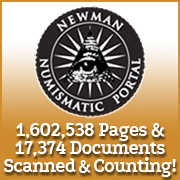
About UsThe Numismatic Bibliomania Society is a non-profit organization devoted to the study and enjoyment of numismatic literature. For more information please see our web site at coinbooks.org SubscriptionsThose wishing to become new E-Sylum subscribers (or wishing to Unsubscribe) can go to the following web page link MembershipThere is a membership application available on the web site Membership Application To join, print the application and return it with your check to the address printed on the application. Print/Digital membership is $40 to addresses in the U.S., and $60 elsewhere. A digital-only membership is available for $25. For those without web access, write to: Terry White, Treasurer AsylumFor Asylum mailing address changes and other membership questions, contact Terry at this email address: terrywhite5475@yahoo.com SubmissionsTo submit items for publication in The E-Sylum, just Reply to this message, or write to the Editor at this address: whomren@gmail.com BUY THE BOOK BEFORE THE COINSale Calendar |
- WAYNE'S WORDS: THE E-SYLUM FEBRUARY 4, 2018
- NEW BOOK: MONETARY HISTORY OF CENTRAL AMERICA
- NEW BOOK: MONEY OF ESTONIA
- NEW BOOK: THE BANKNOTE BOOK: GERMANY
- SPECIAL EDITIONS OF 1792: BIRTH OF A NATION'S COINAGE
- PHILLIP CARRIGAN (1944-2018)
- RAPP’S EXTENSIONS TO WOOD’S COMMEMORATIVE COINAGE
- QUERY: STONE MOUNTAIN COUNTERMARK INFO SOUGHT
- NEWMAN PORTAL SEARCH: NEW YORK HORTICULTURAL SOCIETY
- LATEST SS CENTRAL AMERICA TREASURES AT LONG BEACH
- DICK JOHNSON ON THE MINT’S NEW MEDAL SERIES
- NOTES FROM E-SYLUM READERS: FEBRUARY 4, 2018
- WHITMAN SEEKS IDEAS FOR NEXT BOWERS SERIES BOOK
- DICK JOHNSON ON ARTIST INSPIRATIONS
- VOCABULARY TERMS: DIE ALIGNMENT, ROTATED DIE
- DR. GEORGE HETRICH (1862-1928)
- DOUGLAS SAVILLE REMEMBERS THEODORE V. BUTTREY JR.
- DR. JONATHAN JARRETT REMEMBERS TED BUTTREY
- MICHAEL MAROTTA ON JOHN J. FORD
- QUERY: BUICK, GENERAL MOTORS ENCASED DOLLARS
- VIDEO: DR. STEPHEN SCHER ON MEDALS
- 2018 ANA SUMMER SEMINAR
- 2018 ANS SEMINARS
- NEW IMAGES OF ISIS COINAGE
- LIVEAUCTIONEERS ADDS BLOCKCHAIN PROVENANCE
- 1795 CAPPED BUST RIGHT EAGLE
- 1879 QUINTUPLE STELLA OFFERED
- MEDAL SELECTIONS FROM NUMISMAGRAM: SKULLS
- ANCIENT COIN AMONG OLDEST FOUND NEAR JERUSALEM
- 1967 LEEDS ROMAN COIN HOARD ON DISPLAY
- REAL DETECTORISTS FIND FAKE DETECTORISTS FIND
- U.S. MINT RESUMES MUTILATED COIN PROGRAM
- REPLACING THE RUSTED RUPEES OF SEYCHELLES
- 2017 ONE POUND COIN OBSOLETE BLANK ERROR
- COIN COMMEMORATES QUEEN ELIZABETH II CORONATION
- 2018 FOUR GENERATIONS ROYAL FAMILY COIN ISSUED
- HIGHLAND MINT STRIKES 2018 SUPER BOWL COINS
- NEW DEVELOPMENT IN D. B. COOPER CASE CLAIMED
- COUNTERFEITERS FORGE AUSTRALIAN POLYMER NOTES
- UKRAINIAN ARTISTS CREATE TRUMP PORTRAIT IN PENNIES
- LINCOLN'S WORLD FAMOUS 50,000 SILVER $ BAR
- IN OTHER NEWS: FEBRUARY 4, 2018
Click here to access the complete archive
To comment or submit articles, reply to whomren@gmail.com
Content presented in The E-Sylum is not necessarily researched or independently fact-checked, and views expressed do not necessarily represent those of the Numismatic Bibliomania Society.
WAYNE'S WORDS: THE E-SYLUM FEBRUARY 4, 2018
 New subscribers this week include: Jane Sears, Jim Duguay, and DC Clayton. Welcome aboard! We now have 3,414 subscribers.
New subscribers this week include: Jane Sears, Jim Duguay, and DC Clayton. Welcome aboard! We now have 3,414 subscribers.
Thank you for reading The E-Sylum. If you enjoy it, please send me the email addresses of friends you think may enjoy it as well and I'll send them a subscription with your compliments. Contact me at whomren@gmail.com anytime regarding your subscription, or questions, comments or suggestions about our content.
This week we open with three new books, a special edition, and the loss of a longtime NBS member and officer. Other topics this week include U.S. Commemorative coinage references, the SS Central America treasure, the U.S. Mint's new medal series and mutilated coin program, the ANA Summer Seminar, ISIS coinage, and a Trump portrait in pennies
To learn more about banknotes of Germany, the luxurious feel of the Japanese cloth, bespoke bindings, Harry Rapp, Charles Foster, California fractional gold coins, copper planchets, coin artist inspirations, encased dollars, the 1879 Quintuple Stella, the Rusted Rupees of Seychelles, D.B. Cooper, and Lincoln's World Famous 50,000 Silver $ Bar, read on. Have a great week, everyone!
Wayne Homren
Editor, The E-Sylum
NEW BOOK: MONETARY HISTORY OF CENTRAL AMERICA
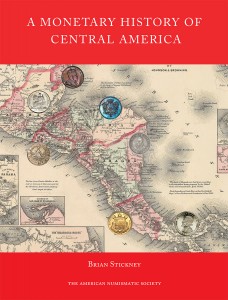 A Monetary History of Central America Central America (Numismatic Studies 35)
A Monetary History of Central America Central America (Numismatic Studies 35)
by Brian Stickney
List price: $99 plus shipping & handling
Member price: $49.95 plus shipping & handling
ISSN 0517-404-x
ISBN 978-0-89722-350-8
Hardcover, 386 text pages, 630 b/w figures
A Monetary History of Central America takes a comprehensive approach to analyze the political, economic, and sociological events which influenced the evolution of coinage and medals in Central America. Beginning with the discovery of the New World, the book seeks to determine how and why the many monetary regimes evolved, were sustained, and ultimately replaced throughout both the Colonial and Independence eras. The author has assembled new and revised mintage figures for coins and medals, which, combined with historical data about withdrawals and demonetization, allows a much better understanding of this material.
The book provides insight into the influence of international monetary conferences and unions on Central America and its evolving coinage. Each chapter focuses on the monetary history of one country, updating the bibliography to reflect current scholarship, and presenting a nearly complete representation of every minted type, many from the author’s collection. The book includes a thumbnail chronology of political and monetary events from 1500–1965, a glossary of terms, and gold and silver production and ratio tables throughout the centuries.
Order this title from our distributor, Casemate Academic/Oxbow Books. ANS Members, use your discount code at checkout. Forgot the code? Email Emma Pratte (epratte@numismatics.org), or call 212.571.4470 x117.
For more information, or to order, see:
A Monetary History of Central America Central America (Numismatic Studies 35) (http://numismatics.org/store/stickney/)

NEW BOOK: MONEY OF ESTONIA
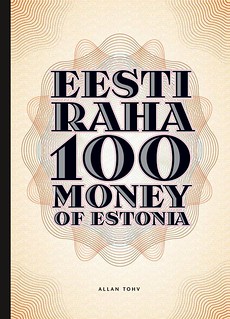 A catalogue of coin and paper. 1918-1941,1990-2016. In the book there are more than 1700 Reproduction of high quality, colour, coin and paper. Designs of coins and notes 1919-1940, eduard
w, Günther Rhine, Kristjan, etc. Money Designs 1990, Mari go, Paul Lu, etc coins, Vladimir He, Strap-ur plum tree, Ado, etc. The drafts of the banknote crowns. The book has described turnover money,
Nikolai State, Günther Rhine, etc. All Coins are described in the book, s. H samples, error of money and fakes. The book describes kills, S.H. Replacement Money, samples, paint samples, samples,
error money, fakes and home money. Designer Mart Anderson has made an outstanding and special design. The book is half of the French midnight, with a unique including, Estonian and English
A catalogue of coin and paper. 1918-1941,1990-2016. In the book there are more than 1700 Reproduction of high quality, colour, coin and paper. Designs of coins and notes 1919-1940, eduard
w, Günther Rhine, Kristjan, etc. Money Designs 1990, Mari go, Paul Lu, etc coins, Vladimir He, Strap-ur plum tree, Ado, etc. The drafts of the banknote crowns. The book has described turnover money,
Nikolai State, Günther Rhine, etc. All Coins are described in the book, s. H samples, error of money and fakes. The book describes kills, S.H. Replacement Money, samples, paint samples, samples,
error money, fakes and home money. Designer Mart Anderson has made an outstanding and special design. The book is half of the French midnight, with a unique including, Estonian and English

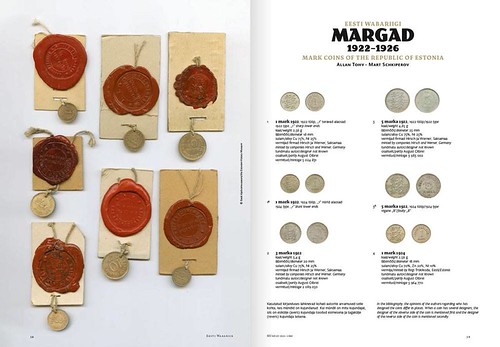
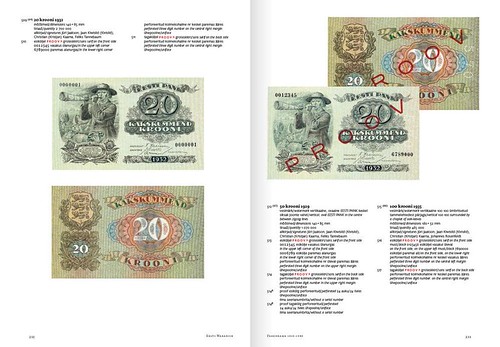
For more information, or to order, see:
https://www.facebook.com/Eesti-Raha-100-159701481165068/
To read the earlier E-Sylum article, see:
NEW BOOK: ESTONIAN COINS AND BANKNOTES (http://www.coinbooks.org/esylum_v16n25a03.html)
NEW BOOK: THE BANKNOTE BOOK: GERMANY
 I'm pleased to announce the Germany chapter is now available for individual sale at US$9.99, and as a free download to subscribers.
I'm pleased to announce the Germany chapter is now available for individual sale at US$9.99, and as a free download to subscribers.
This is by far the largest chapter published to date, thanks to the dedicated efforts of author Mark Irwin, who has created an excellent English-language guide to understanding the complex issuing history of a country which underwent disastrous hyperinflation and destruction of its economy due to two world wars.
Germany (Europe)
This 91-page catalog covers notes issued by the Reichsschuldenverwaltung (Imperial Debt Office) from 1874 to 1923, Reichsbank (Imperial Bank) from 1876 to 1945, Rentenbank (Stabilization Bank) from
1923 to 1939, Deutsche Golddiskontbank (German Gold Discount Bank) in 1924, Allied Military Currency in 1944, Régie des Chemins de Fer des Territoires Occupés (Occupied Territories Railway Company)
in 1923, Reichskreditkasse (Imperial Credit Bank) from 1939 to 1945, Deutsches Wehrmacht (German Armed Forces) from 1940 to 1942, Sächsische Staatsbank (State Bank of Saxony) in 1945,
Reichsverteidigungsbezirke Sudetenland und Niederschlesien (Imperial Defense District of the Sudetenland and Lower Silesia) in 1945, Trésor Français (French Treasury) in 1947, Baden
Staatsschuldenverwaltung (Baden State Debt Administration) in 1947, Rheinland-Pfalz Landesregierung (Government of the State of Rhineland-Palatinate) in 1947, and Württemberg-Hohenzollern
Finanzministerium (Finance Ministry of Württemberg-Hohenzollern) in 1947. Published 02.02.2018.
For more information, or to order, see:
http://www.banknotenews.com/
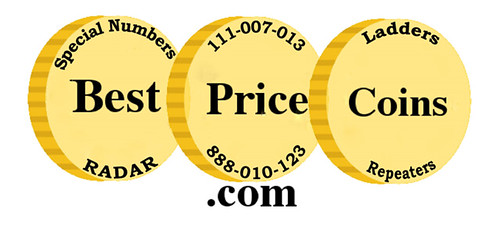
SPECIAL EDITIONS OF 1792: BIRTH OF A NATION'S COINAGE
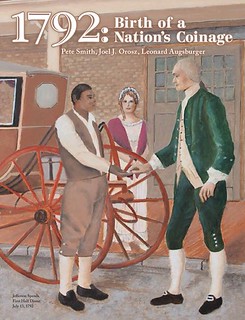 Kolbe & Fanning Numismatic Booksellers have announced the availability of a limited Special Edition produced on commission for last year’s NLG Book of the Year winner 1792: Birth of a
Nation's Coinage, written by Pete Smith, Joel J. Orosz, and Leonard Augsburger.
Kolbe & Fanning Numismatic Booksellers have announced the availability of a limited Special Edition produced on commission for last year’s NLG Book of the Year winner 1792: Birth of a
Nation's Coinage, written by Pete Smith, Joel J. Orosz, and Leonard Augsburger.
Thirty copies of the book have been hand-bound in green quarter morocco with Japanese cloth sides. The high quality of the leather used, in combination with the luxurious feel of the Japanese
cloth, make this an unusually pleasing Special Edition. Twenty-five copies were reserved for sale, and they can be ordered from the Kolbe & Fanning website at numislit.com for $325.

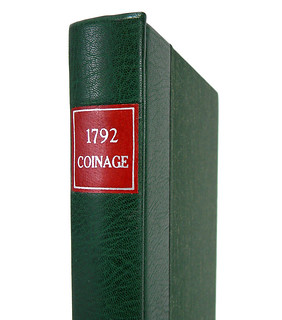
To order the special Edition, see:
1792: BIRTH OF A NATION'S COINAGE.; Special
Edition (https://www.numislit.com/pages/books/4863/pete-smith-joel-j-orosz-leonard-augsburger/1792-birth-of-a-nations-coinage-special-edition)
Kolbe & Fanning also had ten copies of the book hand-bound in red full morocco, with an accompanying slipcase. The front cover of this Deluxe Edition is impressed with a depiction of the obverse of the 1792 half disme. Hand-marbled paper was used for the endpapers and for the interior of the Japanese cloth slipcase. Only five copies were available for sale and were quickly sold to clients who contacted us when we announced last year that we would be undertaking the project.
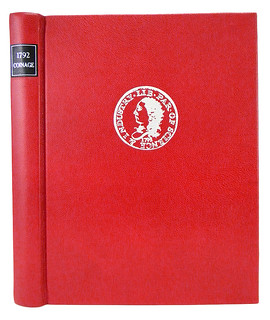
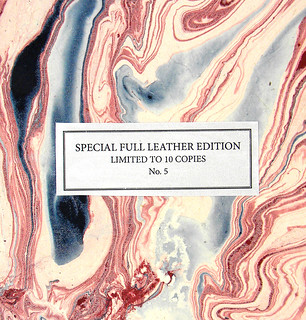
Though not available for sale, we also had five copies produced for those involved in this special edition project. Also hand-bound in red full morocco, this Authors’ Edition features the 1792 half disme image in silver on the front cover and in blind on the rear cover, different hand-marbled endpapers, a silk marker, speckled page edges, and a spine with five raised bands decorated with a custom-engraved eagle device adapted from the 1792 half disme reverse. The book itself is housed in an accompanying Japanese cloth clamshell box.
Similar special editions were produced by Kolbe & Fanning for the 2011 Secret History of the First U.S. Mint, by Orosz and Augsburger. Those sold out very quickly, and it is anticipated that the current special editions will not be available for long. Those interested are encouraged to order copies from the Kolbe & Fanning website at numislit.com as soon as possible.
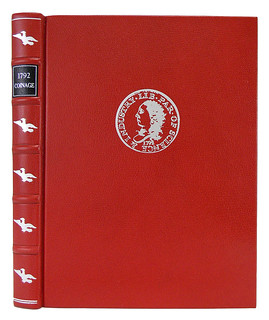


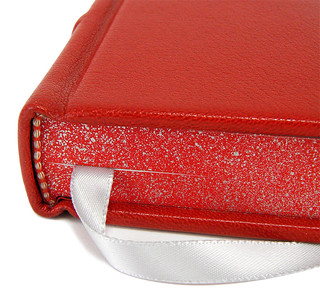
Kolbe & Fanning are pleased to discuss bespoke binding projects with authors and publishers, and are also available to consult with clients on individual works requiring binding or conservation work. Please contact David Fanning at df@numislit.com for more information.
PHILLIP CARRIGAN (1944-2018)
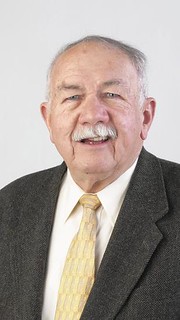 A Waukegan resident, Carrigan served on advisory boards for organizations that provide Head Start programs, transitional housing and food pantries, Anderson said.
A Waukegan resident, Carrigan served on advisory boards for organizations that provide Head Start programs, transitional housing and food pantries, Anderson said.
Carrigan was born near Boston, where he began his career as a pharmacist, according to his Facebook page.
He moved to Illinois to work for Abbott Laboratories where he was a research scientist and was inducted into its prestigious Volwiler Society, Jakes said.
He retired in 2004 after 30 years with the company, according to his Facebook page.
A dedicated volunteer and advocate, Philip Carrigan had an early example of how to help the less fortunate in his father, Philip Carrigan Sr., said his wife, Mary Clare Jakes.
Carrigan, who was 73 when he died, would tell her about how he would go with his father to deliver Thanksgiving dinners, she said.
Jakes added that Carrigan volunteered with PADS Lake County, going every Friday to the homeless shelter in Waukegan.
Joel Williams, executive director of PADS Lake County, said Carrigan "really embodied the way that we try to treat people with dignity."
He had a real knack for talking to people about what's going on in their lives, the happenings in the world or just nothing at all, Williams said.
"Sometimes there are just special people, and he was certainly one of those people,"
A wake is planned for 4 to 8 p.m. Feb. 9 at Peterson & Patch Funeral Home, 408 N. Sheridan Road in Waukegan. Visitation will follow 10 to 11 a.m. Feb. 10 with a 11 a.m. Mass, both at St. Patrick's Church, 15000 W. Wadsworth Road in Wadsworth.
To read the complete article, see:
CLC mourns former board trustee and 'tireless advocate' Philip
Carrigan (http://www.chicagotribune.com/suburbs/lake-county-news-sun/news/ct-lns-clc-phil-carrigan-st-0130-20180129-story.html)
From his bio in the Spring 2003 issue of The Asylum, where he ran for a seat on the NBS Board:
He began to collect coins at the age of eight and has continued this pursuit since that time. Phil is a life member of the ANA and ANS, president of the Barber Coin Collector's Society and a member of many specialty collector groups. His main collecting interests lie in the US Barber and Bust half dimes series, and in Canadian decimal coinage and colonial tokens. He has an extensive library with particular emphasis on references with significant Canadian content. Phil has been a member of NBS for nearly ten years and is a strong supporter of the objectives and key role this group plays in numismatics.
Philip J. Carrigan (73) passed away January 29, 2018. He joined the Chicago Coin Club May 10, 1989 as member 1013. Phil was a life member of the American Numismatic Association (ANA), served as the Education Chairman at the Chicago 1999 ANA Convention, worked as a volunteer at Chicago’s 2011, 2013-15 ANA Conventions and received the ANA Presidential Award in 2014.
Phil had a deep interest in Barber coinage. In 1989 he became a charter member of the Barber Coin Collectors’ Society, served as President (1994-2015), made many contributions to their journal and received their 2015 Award of Appreciation. He was a charter member of the John Reich Collectors Society and a member of the Numismatic Bibliomania Society where he also served on their Board.
Phil collected Canadian and Maritime decimal coins and tokens, was a life member of the Canadian Numismatic Association and attended most of their annual conventions.
Phil was an avid collector of Canadian and United States numismatic literature, including books, auction catalogues, fixed price lists and related material. He enjoyed reading the history of early collectors as told through the auction of their collections. His library was so large, he frequently wondered if it was too heavy for the second floor of his home. Phil was a recognized figure at most major numismatic literature auctions and recognized as an expert in the field.
A native of Massachusetts, Phil earned an undergraduate pharmacy degree from Massachusetts College of Pharmacy, a master’s degree from Northeastern University and a Ph.D. in pharmacokinetics from the University of Connecticut. He finished graduate studies at University of Buffalo. He joined Abbott Laboratories in 1974 and served for thirty years working in the area of pharmaceutical research and development. In 1985 he was inducted into Abbott’s prestigious Volwiler Society which recognizes their most distinguished scientists and engineers.
Phil is survived by his wife Mary Clare Jakes, daughter Erin Carrigan, son-in- law Jeremy Bell and twin granddaughters Audrey and Elizabeth.
Phil was a dedicated volunteer and advocate in Waukegan and Lake County, Illinois. He was elected as a Trustee at the College of Lake County and also served as Chairman of the Board. He worked tirelessly with numerous organizations dedicated to helping the homeless, the hungry and visiting prisoners. In lieu of flowers, donations can be made to the Eddie Washington Center, which provides transitional housing for homeless single men in Lake County Illinois.
Dan Hamelberg writes:
Phil was a great supporter of the Numismatic Bibliomania Society and past officer. He was a regular at the NBS annual meetings for many years, and always eager to share his knowledge. He will be missed.
Mark Borckardt writes:
I didn’t know Phil well, but he always had a pleasant greeting and brief conversation when our paths would cross at various coin shows and conventions. I will miss those exchanges.
Dave Hirt writes:
I was shocked and saddened to hear that Phil Carrigan had passed away.He was a wonderful friend of mine. It seems that in the last few years we have lost too many collectors of numismatic literature.
I first met Phil more than twenty years ago. It may have been at an ANA convention, or a Baltimore coin show. We quickly became friends. Phil at that time had a small library but was not a collector of numismatic literature. I believe that I helped to make him one. We often called each other,and those calls would last at least an hour. He eventuality built a fine numismatic library.
We roomed together at several ANA conventions. I especially remember one at Cleveland in the Spring of 1997. Charles Davis conducted an outstanding sale of numismatic literature. It seemed like a who's who of literature collectors at that time attended the sale. Both Phil and I were successful bidders in that sale.
Phil was also a collector of Canadian coins, and regularly attended the CNA convention. One year his trip to Canada was delayed as he was rebuffed as he tried to board his flight. His passport had expired. He had forgotten to renew it.
As stated in the newspaper article, Phil was a person who cared for the welfare of others. He would often mention to me of his work with prisoners, trying to get them to turn their lives around. He was a good man!
Joel Orosz writes:
The first thing you noticed about Phil Carrigan was his impressive height. The second was the accent that demonstrated the Bostonian roots of this transplanted Midwesterner. Only then did you discover that he was a genial giant in many fields both numismatic (Canadian numismatic literature, for example), and not.
We intersected in a couple of those fields, namely pharmaceuticals and philanthropy. Phil’s career as a pharmaceutical researcher with Abbott Laboratories and my residence in Kalamazoo, the home of the Upjohn Company, gave us plenty of room to needle each other about which firm had done more to advance the cause of human health. Phil ultimately prevailed in this dispute when Abbott remained an independent company, while Upjohn, sadly, disappeared down the gaping maw of Pfizer.
We also had lively discussions about the many charitable organizations that both Phil and his wife Mary Clare actively supported. Especially during the time I was a Program Director for the W.K. Kellogg Foundation, one of the nation’s top five grantmaking foundations, Phil skillfully lobbied for support for the human service and educational charities that were dear to his heart.
We so easily fall into the habit of calling someone a “good guy” that the term has become faint praise. In Phil’s case, however, calling him a good guy should be understood as a very high form of praise. Whether in his professional life as a researcher, or in his his private life as a volunteer, he was all about the alleviation of human suffering. That is about as good as a good guy can get.

RAPP’S EXTENSIONS TO WOOD’S COMMEMORATIVE COINAGE
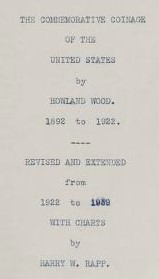 Harry Rapp’s Extensions to Howland Wood’s Commemorative Coinage of the United States
Harry Rapp’s Extensions to Howland Wood’s Commemorative Coinage of the United States
In 2013, Bruce Smith described a manuscript containing Harry W. Rapp’s extensions to the 1922 Howland Wood text on U.S. commemoratives. Wood’s monograph, covering 1892-1922, was extended by Rapp to 1939. Bruce Smith has recently loaned this manuscript to the Newman Portal for scanning, and the full document is now available.
Little of Harry Rapp is known, though he appears to have been quite active in the Detroit Coin Club in the 1920s and 1930s, based on club minutes published in The Numismatist. He seems to have appreciated numismatic books, as the June 1940 Numismatist notes “Harry Rapp suggested having the club list the books and other material of its library and distribute same among its members. Several good numismatic books are available in the club library and he urged members to take advantage of our ownership.”
Dealer W. David Perkins loaned Detroit Coin Club ephemera to Newman Portal some time ago, and, in their 1951 banquet program, Rapp is listed as a twenty-five year member who was awarded “honorary life membership” in that club. The extensions to the Howland Wood text represent useful information, including the legislative authority and mintages for the various commemoratives of the period. This manuscript appears to be unique, and apparently never reached publication.
Link to Harry W. Rapp manuscript on Internet Archive:
https://archive.org/details/commemorativecoi1939howl
Link to Bruce Smith’s 2013 E-Sylum article on the Harry Rapp manuscript:
http://www.coinbooks.org/club_nbs_esylum_v16n15.html#article9
Link to ANS Digital Edition of Howland Wood’s Commemorative Coinage of the United States (1922):
http://numismatics.org/digitallibrary/ark%3A/53695/nnan26716/pdf
QUERY: STONE MOUNTAIN COUNTERMARK INFO SOUGHT

I am contemplating a study of the Stone Mountain Half and at this point just accumulating information. The counterstamp issue is one of the more interesting aspects of the issue.
To read the earlier E-Sylum article, see:
QUERY: ARLIE SLABAUGH'S COMMEMORATIVE COINAGE RESEARCH NOTES SOUGHT (http://www.coinbooks.org/esylum_v12n13a09.html)
Robert adds:
I did a long search on the Newman Portal with a lot of different terms and this eventually popped up.

To read the complete booklet on the Newman Portal, see:
Historical Arrangement of United States Commemorative Coins (https://nnp.wustl.edu/library/book/520735)
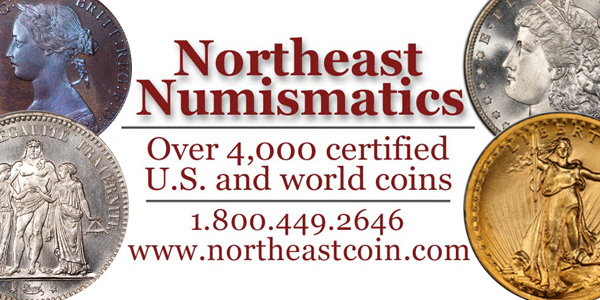
NEWMAN PORTAL SEARCH: NEW YORK HORTICULTURAL SOCIETY
Tokens and medals are fertile ground for numismatic research. The fundamental questions of our discipline ask why an object was created, who created it and how manufactured, and finally how the object was used or distributed. For a series of coins these questions might have all the same answers. For token and medals, each tends to stand on its own and each of the questions must be individually investigated.
This week a Newman Portal searched for “New York Horticultural Society,” and, while the search results are helpful, there is clearly more research to do on this particular object. The user was almost certainly searching for award medals of this New York group, and a Newman Portal search identifies Presidential Coin and Antique’s Gold Medal Sale (December 1991, #51 in that series), lot 327. From there the cataloger Joe Levine does the heavy lifting:
NEW YORK HORTICULTURAL SOCIETY AWARD MEDAL, 1857. 41.2mm. Silver. Struck by Wright & Bale. Extremely Fine. Obverse inscribed: NEW YORK HORTICULTURAL SOCIETY INSTITUTED 1818 around a rayed sun shining down on a scene depicting a waterfall to the left and a pedestaled urn to the right flanked by a tree to the right and a flower to the left. The reverse contains a floral wreath surrounding PRESENTED/TO and the engraved inscription: G. GABRIELSON/FOR THE BEST/FLORAL BASKET/JUNE 17TH, 1857. Below the wreath, at the bottom is the signature, W&B N.Y. This is an extremely rare medal. Our search of 19th century auctions has revealed only one appearance, that in Chapmans' Isaac F. Wood Sale of American Medals, Lot #118. The medal there was described as "Presented 1859". NASCA's sale of May 1987, Lot #1897, contained an About VF Silver medal engraved to P.T. Quinn, Sept. 21, 1859. It is likely that this is the same medal offered in the 1894 Wood Sale. This medal realized $220. We are aware of only one other Silver medal in collector's hands. That piece is dated 1833, and is inscribed to "M Floy".

Levine addresses nearly every point of the numismatic inquiry. The question of why so few were produced remains, and for that one would likely have to comb through the archives of the New York Horticultural Society. Also missing is an image of the object. Perhaps an E-Sylum reader could supply?
Image: Extract from the Isaac Wood catalog, lot 118, showing the purchaser as “Low” and the sale price of 65 cents.
Link to Presidential Coin and Antique sale #51:
https://nnp.wustl.edu/library/auctionlots?AucCoId=511514&AuctionId=511929&page=40
Link to S. H. & H. Chapman’s sale of the Isaac Wood medal collection:
https://nnp.wustl.edu/library/auctionlots?AucCoId=21&AuctionId=510864
LATEST SS CENTRAL AMERICA TREASURES AT LONG BEACH
“New Cargo” Gold-Rush Treasures In Long Beach
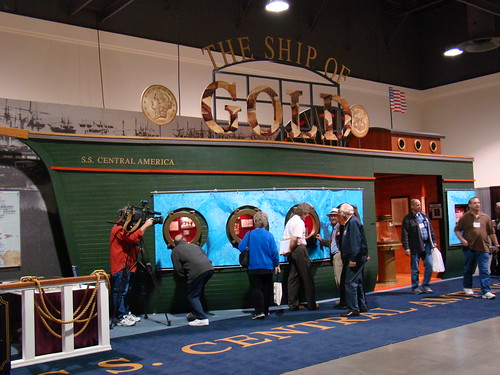
First public exhibit of latest recovered glittering trove from fabled SS Central America will be at Feb. 22-24, 2018 Long Beach Expo
The unparalleled SS Central America “Ship of Gold” exhibit will dock with $40 million of glittering “new cargo” sunken treasure at the February 22-24, 2018 Long Beach Coin, Currency, Stamp & Sports Collectible Expo (www.LongBeachExpo.com).
This will be the first public display of a portion of the historic gold and silver coins, gold ingots and unopened sacks of treasure gold dust recovered during the 2014 expedition to the Atlantic Ocean site where the Gold Rush-era cargo was lost at sea 161 years ago. The California Gold Marketing Group LLC acquired the never-before- publicly exhibited treasure in a court-approved transaction this past November, and will be publicly displaying the legendary trove for the first time.
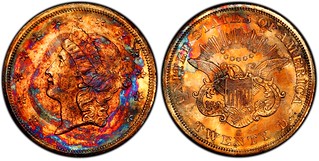 “The story of the SS Central America, its cargo, its lost passengers and crew and its survivors is a historic moment in American history, and the recovered items are a time capsule
of the great California Gold Rush,” said Dwight Manley, managing partner of the California Gold Marketing Group. “For insurance purposes, we’ve estimated the display’s value at $40 million, but these
extraordinary treasures are priceless.”
“The story of the SS Central America, its cargo, its lost passengers and crew and its survivors is a historic moment in American history, and the recovered items are a time capsule
of the great California Gold Rush,” said Dwight Manley, managing partner of the California Gold Marketing Group. “For insurance purposes, we’ve estimated the display’s value at $40 million, but these
extraordinary treasures are priceless.”
A 280-foot long, three-masted side-wheel steamship, the SS Central America was carrying tons of California gold that had been shipped from San Francisco to Panama when she sank in a hurricane during a voyage from Aspinwall (now Colón), Panama to New York City in September 1857. The shipwreck site and the gold were discovered more than 7,000 feet below the surface of the Atlantic Ocean in September 1988.
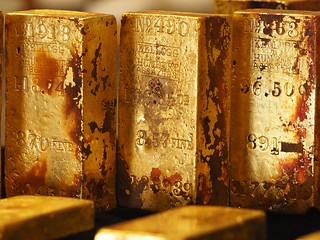 Housed in a 40-foot long re-creation of the famous ship’s hull, the Ship of Gold exhibit originally debuted at the February 2000 Long Beach Expo to display a portion of the vast treasure
from the first SS Central America recovery operations in the late 1980s. The exhibit subsequently was seen over the years by millions of people across the United States and overseas.
Housed in a 40-foot long re-creation of the famous ship’s hull, the Ship of Gold exhibit originally debuted at the February 2000 Long Beach Expo to display a portion of the vast treasure
from the first SS Central America recovery operations in the late 1980s. The exhibit subsequently was seen over the years by millions of people across the United States and overseas.
This latest display will showcase many of the 3,100 gold coins, more than 10,000 silver coins and 45 gold ingots that have been held in secure vaults since they were retrieved from the ocean floor four years ago. All the coins are now being certified by Professional Coin Grading Service (www.PCGS.com) using the new PCGS Gold Shield™ service.
“The exhibit also includes a type of historic SS Central America items never before displayed: leather satchels filled with more than 1,000 ounces of 1857 California gold dust that were recovered from a safe on the sunken ship!,” exclaimed Manley. The gold dust is contained in the original pokes, hand-sewn sacks that remained sealed since 1857 or earlier.
“This is truly an international discovery. In addition to all the United States coins, the trove includes many coins from around the world, including two Australian gold sovereigns struck in Sydney in 1855 and 1856, and both are the finest known. There also are gold coins from France, including a Napoleon 20 francs, British gold sovereigns of Queen Victoria, Mexican eight escudos, Netherlands ducats, Dutch guldens and Peruvian gold, too,” said Manley.
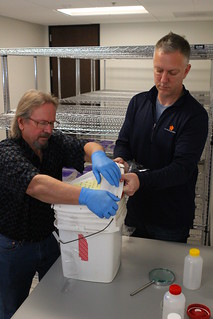
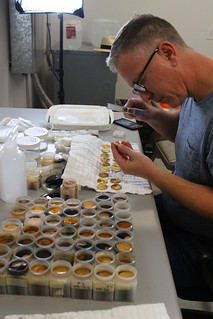
LEFT: Evans and Manley opening container
RIGHT: Manley examines coin
Robert D. Evans, the chief scientist on the 1980's mission that first located and recovered a portion of the fabulous sunken treasure and who assisted with the 2014 recovery, will be at the exhibit each day during the show to meet with visitors.
 On January 9, 2018, the California Gold Marketing Group received court approval and formally took possession of the treasure recovered from the SS Central America in 2014. It had
already been transported from Florida to the Professional Coin Grading Service headquarters in California, but remained in 38 unopened containers that were sealed in June 2014.
On January 9, 2018, the California Gold Marketing Group received court approval and formally took possession of the treasure recovered from the SS Central America in 2014. It had
already been transported from Florida to the Professional Coin Grading Service headquarters in California, but remained in 38 unopened containers that were sealed in June 2014.
Manley and Evans promptly began opening the sealed containers on January 10, and started the careful process of examining, curating and cataloging the trove, one historic piece of treasure at a time.
The three-day Long Beach Expo will be open to the public, Thursday to Saturday, February 22-24, in the Long Beach, California Convention Center, 100 S.Pine Ave.
Bob Evans adds:
This will all be very exciting, and I'm looking forward to sharing the new finds with the world. It is a whole new season of discovery in the curatorial lab right now, as the rust, minerals, and other deposits fall away, revealing the true nature of the treasure we recovered in 2014.
I see wonderful things!
And if you were to think about the SS Central America site like a… like an abandoned town, a ghost town, or something of that nature in the West… every one of these deposits would be considered a treasure unto itself. And every one of them has a suite of gold in them that says something about that entity, about that person.
And, some of these are just absolutely fascinating. Some of them are just festooned with foreign gold, or California fractional gold; we recovered four Cal fractional quarter dollars the first time around back in 1990 or 1991. They came up in the sweepings from that commercial shipment area. Who knows? It intermingled from a passenger area or something like that had happened. But now we have over a hundred of all different kinds: quarter dollars and half dollars and dollars… and both round and octagonal… fascinating stuff.
To read the complete article, see:
CoinWeek Podcast #89: Recovering Gold from the SS Central America with Bob Evans
(https://coinweek.com/coinweek-podcast/coinweek-podcast-ss-central-america-bob-evans/)
To read earlier E=Sylum articles, see:
LATEST SS CENTRAL AMERICA FINDS REVEALED (http://www.coinbooks.org/esylum_v17n30a05.html)
VIDEO: IN DEEP WATER: FINDING THE SS CENTRAL AMERICA (http://www.coinbooks.org/v20/esylum_v20n45a30.html)

DICK JOHNSON ON THE MINT’S NEW MEDAL SERIES
MINT’S NEW MEDAL SERIES RECYCLES OLD MEDALS
What should we think about the U.S. Mint’s new medal program to issue their Presidential Medal Series – and perhaps other List Medals -- in silver in a new size? Dennis Tucker gushed about this announcement in last week’s E-Sylum.
I’m afraid I don’t share Dennis’ enthusiasm. The Mint is recycling their same old mediocre medallic creations in this proposed series. These were all created by the Mint’s own engravers, almost in cookie cutter designs, one after another copying what had been the previous style and format. They lacked any new art medal expressions. Portrait and eagle. Portrait and eagle motifs. In contrast to all the art medal techniques available, the series, taken as a collection, will be boring, like their 3-inch originals.
Oh! how I wish each president could have been honored with a fresh medallic interpretation of each in an artistic manner. It can be done. Case in point is the Hall of Fame for Great Americans Series, issued by New York University, home of the original Hall of Fame on their Bronx campus.
This series has more than twice the number issued to the number of U.S. presidents. Yet each portrait has a different treatment. Each reverse is a medallic expression of that person’s fame, what he or she did to earn that fame. Each medal is in a different medallic style.
Reason for the difference: The medals were created by 42 different artists bound by no restrictions.
That Hall of Fame Series is never boring. Its charm is its diversity. We can venerate a single medal or the entire series. I know in advance a collection of the new silver presidents could not match a collection of the Hall of Fame’s artistic treatment.
I would by more than willing to trade all the silver medals now planned for, say, five truly art medals of presidents each in a fresh artistic style created by five top medallic artists.
But since the Mint is issuing these medals they will sell to U.S. collectors accustomed to collecting sets of similar coinage denominations. Collectors will buy them.
I am reminded of a statement once said by John Ford: “You could stamp a dead horse with ‘U.S. Mint’ and collectors would buy it.”
Unfortunately, I’m afraid the new silver President medals will be forty-five dead horses.
To read the earlier E-Sylum articles, see:
DENNIS TUCKER ON THE NEW U.S. MINT MEDAL PROGRAMS (http://www.coinbooks.org/v21/esylum_v21n04a32.html)
SCARINCI ON THE U.S. MINT'S NEW MEDAL PROGRAM (http://www.coinbooks.org/v21/esylum_v21n04a33.html)
NOTES FROM E-SYLUM READERS: FEBRUARY 4, 2018
A Well-Told Tale
Harry Cabluck writes:
I have laughed out loud at least three times while enjoying John Kleeberg’s piece about Ted Buttrey’s joust with John J. Ford. What a mighty fine tail-twister and tale-spinner.
What great reading! Thanks for publishing.
To read the earlier E-Sylum article, see:
KLEEBERG ON TED BUTTREY VS. JOHN FORD (http://www.coinbooks.org/v21/esylum_v21n04a15.html)
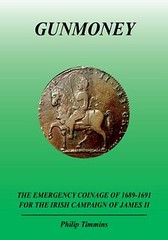 Gunmoney Book Proves Popular
Gunmoney Book Proves Popular
Author Phil Timmons writes:
I have received a number of emails from people interested in my book after reading The E-Sylum.
To read the earlier E-Sylum article, see:
NEW BOOK: GUNMONEY (http://www.coinbooks.org/v21/
esylum_v21n03a04.html)
Coin Collector’s Journal Article on Raymond’s Display System
Scott Miller writes:
I have been reading the many comments on Wayte Raymond’s display system, especially with regard to the handwriting found on what were originally described as coin blocks. The April 1938 issue of The Coin Collector’s Journal (volume 5 Number 1) has a fairly extensive section on the various display cases available, and includes both instructions on lettering the blocks and sample alphabets. The examples shown in the latest E-Sylum have some similarities, but are not quite identical to the sample alphabets provided.
To read the earlier E-Sylum article, see:
MORE ON RAYMOND'S EASY DISPLAY SYSTEM (http://www.coinbooks.org/v21/esylum_v21n04a20.html)
Query: Recoloring Annealed Copper Planchets
Dick Hanscom writes:
I have tried to make copper blanks for tokens, but when I anneal them, they get very dark, as expected. The problem is that I can't bring them back to a nice bright copper color. A local jeweler used Sparex, an acid bath to quench, but I was wondering if there was another way.
More on the Ganga Dynasty Gold Coins
Kavan Ratnatunga writes:
When I saw the story about the 13 Gold coins each of 8 grams, I got interested since I remembered that those Gajapathi Pagoga weigh 3.7 grams, and it was interesting if older specimens were 8 grams. So I tracked the original 2013 story and found that they were 4 grams and only 8 found as shown in the image were discovered.
Also see the Pagoda and the much smaller Fanam, which at 5.8 mm and 0.39 grams is the smallest gold coin I know about.

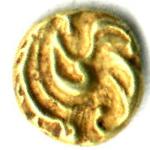
India - 1200-1400 - Western Gangas Gold Gajapati Fanam
Ancient copper plates, gold coins found in Karnataka temple (http://www.thehindu.com/features/friday-review/history-and-culture/ancient-copper-plates-gold-coins-found-in-karnataka-temple/article4436284.ece)
India - 1200-1400 - Western Gangas Gold Gajapati Pagoda (http://coins.lakdiva.org/medievalindian/gajapati_pagoda_au.html)
India - 1200-1400 - Western Gangas Gold Gajapati Fanam (http://coins.lakdiva.org/medievalindian/gajapati_fanam_au.html)
To read the earlier E-Sylum article, see:
7TH CENTURY GANGA DYNASTY COINS DECIPHERED (http://www.coinbooks.org/v21/esylum_v21n04a27.html)
Do Doctors Leave Medical Magazines in Coin Shops?
David Pickup writes:
Just a thought, but do doctors leave medical magazines in coin shops?
To read the earlier E-Sylum article, see:
NOTES FROM E-SYLUM READERS: JANUARY 21, 2018 : The Numismatist Is In (the Doctor's Office)
(http://www.coinbooks.org/v21/esylum_v21n03a15.html)

WHITMAN SEEKS IDEAS FOR NEXT BOWERS SERIES BOOK
What Would You Like to See in the Next “Bowers Series” Book?
Q. David Bowers joined Whitman Publishing as the company’s numismatic director in 2003. This was at the start of a modern renaissance in American numismatic book publishing. Since that time Whitman has published hundreds of new books for the hobby, ranging from 64-page monographs to 900-page encyclopedias, and recently the 1,504-page Mega Red. Many of these books were written by Bowers himself. All of them are influenced by his scholarship and creative direction.
In 2004 Whitman released the first volume in a new collection of coin books. The volume was A Guide Book of Morgan Silver Dollars, and the collection was the “Bowers Series.” Two dozen volumes have been published in the series as of early 2018. They follow a standard format—bound in softcover (except for a few limited editions in hardcover or leather-bound), measuring six by nine inches, printed in full color since 2007, and ranging from 256 to 608 pages. Most volumes focus on a single U.S. coin type. They offer history, retail values in multiple grades, auction data, photographs, buying and selling advice, and other information and guidance for collectors.
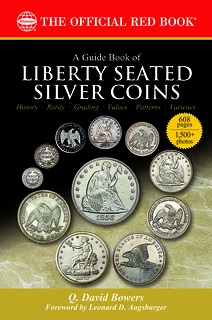
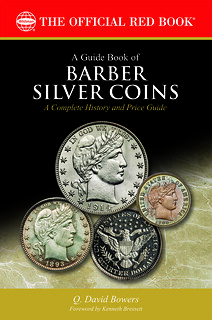
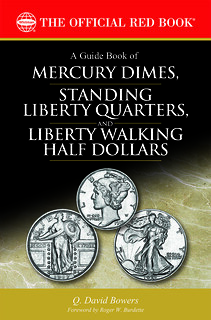
The books in the Bowers Series, and their authors, are:
1. A Guide Book of Morgan Silver Dollars (Q. David Bowers)
2. A Guide Book of Double Eagle Gold Coins (Q. David Bowers)
3. A Guide Book of United States Type Coins (Q. David Bowers)
4. A Guide Book of Modern United States Proof Coin Sets (David W. Lange)
5. A Guide Book of Shield and Liberty Head Nickels (Q. David Bowers)
6. A Guide Book of Flying Eagle and Indian Head Cents (Richard Snow)
7. A Guide Book of Washington Quarters (Q. David Bowers)
8. A Guide Book of Buffalo and Jefferson Nickels (Q. David Bowers)
9. A Guide Book of Lincoln Cents (Q. David Bowers)
10. A Guide Book of United States Commemorative Coins (Q. David Bowers)
11. A Guide Book of United States Tokens and Medals (Katherine Jaeger)
12. A Guide Book of Gold Dollars (Q. David Bowers)
13. A Guide Book of Peace Dollars (Roger W. Burdette)
14. A Guide Book of the Official Red Book of United States Coins (Frank J. Colletti)
15. A Guide Book of Franklin and Kennedy Half Dollars (Rick Tomaska)
16. A Guide Book of Civil War Tokens (Q. David Bowers)
17. A Guide Book of Hard Times Tokens (Q. David Bowers)
18. A Guide Book of Mercury Dimes, Standing Liberty Quarters, and Liberty Walking Half Dollars (Q. David Bowers)
19. A Guide Book of Half Cents and Large Cents (Q. David Bowers)
20. A Guide Book of Barber Silver Coins (Q. David Bowers)
21. A Guide Book of Liberty Seated Silver Coins (Q. David Bowers)
22. A Guide Book of Modern United States Dollar Coins (Q. David Bowers)
23. A Guide Book of the United States Mint (Q. David Bowers)
24. A Guide Book of Gold Eagle Coins (Q. David Bowers)
Now, Whitman Publishing is looking for input from the hobby community for the next volume in the Bowers Series. Collectors, investors, dealers, researchers, and other numismatists, whether professional or amateur, beginner or old-timer, are invited to weigh in. “What subject would you like to see covered in volumes 25 and beyond of the Bowers Series?” asks Whitman publisher Dennis Tucker. Hobbyists can share their opinions by emailing dennis.tucker@whitman.com, or by writing to Whitman Publishing, Attn: Bowers Series, 1974 Chandalar Drive, Suite D, Pelham AL 35124.
DICK JOHNSON ON ARTIST INSPIRATIONS
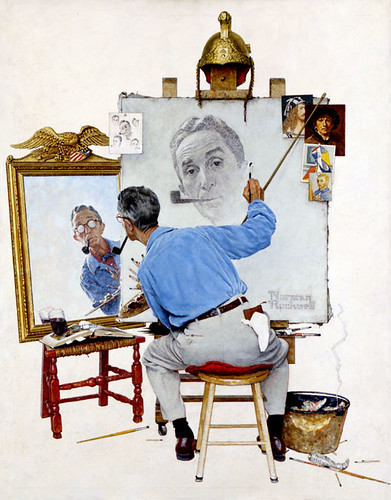
An artist will often use many images of a similar design to what he is creating, as exemplified by this Norman Rockwell self portrait painting.
PUTTING AN END TO SELMA BURKE’S ROOSEVELT DIME CLAIM
Bob Van Ryzin is riding what should be a dead issue in the Selma Burke –John Sinnock controversy. It could be settled with his acceptance of a single statement:
he uses as inspiration for a new design.
When commissioned to prepare a new coin or medal, an artist will research images which have been published before on the same subject. His goal is NOT to copy a previous image, but to create his interpretation of the subject, often to give it a modern, realistic or artistic likeness.
John Sinnock created his image by making his design of Franklin Roosevelt fit nicely in the circular format, with a more realistic and attractive portrait. The fact of its similarity to Selma Burke’s is purely coincidental.
Even if Sinnock had a photo or drawing of Burke’s Roosevelt portrait pinned to his dawning board or in front of him when he models the image, he is not mandated to credit Burke. If this were required, every coin and medal design would have multiple credits, some by dozens of previous sources.
An artist can reveal whatever he chooses. If it is a close resemblance, he can state the design is ‘after’ a particular artist. He can identify his model – as the name of the bison of Fraser’s Buffalo Nickel – or not. Most often an artist remains silent of any of image sources.
There is irrefutable truth in comparing the two portraits of Burke and Sinnock. The author of the Richard’s Roosevelt Dime article quoted in last week’s E-Sylum said it best:
In general, Burke's profiles of Roosevelt are similar to that found on the dime. They face left, have the same angle of cut on the neck [truncation], and certainly look like Roosevelt. They are, however, not exactly the same. Burke's drawing of Roosevelt is different in that it portrays a younger looking man than found on the dime. It is also different in that her drawing does not portray Roosevelt directly from the side. Burke's drawing allows the viewer to see a few of the right side features of Roosevelt's face in addition to the left side details. The bas relief sculpture of Roosevelt also seems to be proportionately different, although close in detail to that of the dime.
Burke’s claim is groundless.
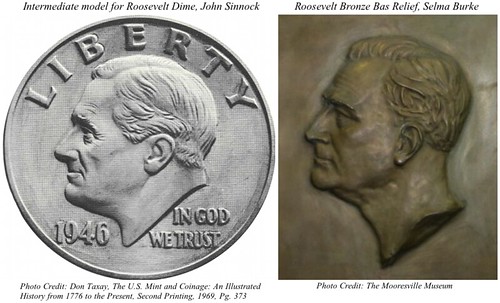
Roger Burdette adds:
The Selma Burke claim is completely without merit.
I've researched the FDR dime and evolution of the design. Nothing suggests even the slightest involvement of Ms. Burke or her drawing/bas relief, etc.
To read the earlier E-Sylum article, see:
VAN RYZIN ON SELMA BURKE AND JOHN SINNOCK (http://www.coinbooks.org/v21/esylum_v21n04a16.html)
THE BOOK BAZARRE
VOCABULARY TERMS: DIE ALIGNMENT, ROTATED DIE
Two terms are included this week for their close relationship. Rotated Die coins are the result of Die Alignment (or chattering). Both are described by numismatists using shorthand symbols shown in the chart.
Die Alignment. Positioning or orienting a pair of dies – obverse and reverse – so the axis of each matches perfectly. Dies cut on round DIESTOCK have the ability of being rotated, and thus need to be oriented during SETUP. Pieces struck from dies at this time, DIE TRIALS, may show a perfect ALIGNMENT, or more often, show an axial misalignment until they are correctly positioned. A struck piece with an imperfect alignment is called a ROTATED DIE.
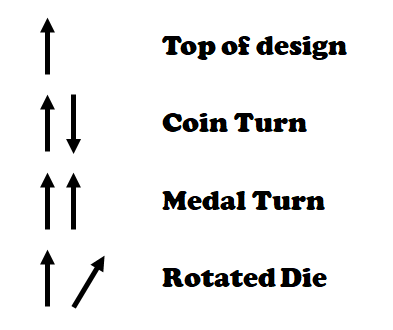 Alignment on struck pieces is expressed by arrows in numismatic literature: the axis is shown from the bottom up, expressed as an arrow pointing up. Medals are usually two arrows pointing
up (called MEDAL TURN, top of obverse is directly opposite top of reverse); coins are usually two arrows in opposite directions (called COIN TURN, top of obverse opposite bottom of reverse). There
are exceptions, of course. See AXIS (where a shortened form of expressing alignment by the omission of the first arrow is illustrated).
Alignment on struck pieces is expressed by arrows in numismatic literature: the axis is shown from the bottom up, expressed as an arrow pointing up. Medals are usually two arrows pointing
up (called MEDAL TURN, top of obverse is directly opposite top of reverse); coins are usually two arrows in opposite directions (called COIN TURN, top of obverse opposite bottom of reverse). There
are exceptions, of course. See AXIS (where a shortened form of expressing alignment by the omission of the first arrow is illustrated).
Keying dies for alignment. On die alignment of very critical register some form of keying is employed. This can be as simple as drawing, scribing, or painting a line – GUIDE MARK – on the side of both dies. Dies are placed in the press where these lines can be observed and are locked in their chucks so the two dies are lined up exactly. Pieces struck at this time should have the desired die alignment.
For OPEN FACE DIES a very exacting form of keying can be employed: GUIDE PIN AND BUSHING. A hole is drilled in the face of both dies (outside the image, of course) directly across from each other; a guide pin is inserted in one and when the dies are mated the pin should enter the bushing lining the hole on opposite die for critical register. During striking the guide pin can remain (if not in the way of feeding the blanks) or be removed.
Dies cut on square or hexagonal diestock usually do not need a critical register for both dies as the alignment is left up to the diemaker to cut the die precisely square with one side of the diestock (the pressman can easily obtain die alignment during SETUP by manually positioning the square or hexagonal diestock, but could, conceivably be 90°, 180° or 270° off alignment for square stock).
Rotated misalignment. Where struck pieces show rotated misalignment, particularly in the coining process with dies on round diestock, this is a result of: (1) incorrect setup, a human error of ineptness or malfeasance; or (2) loose dies, which may cause a CHATTERING of the dies, which will eventually cause a struck piece with rotated dies. The later is a mechanical error, no matter how tight the dies are locked in their chucks, some vibration may loosen these causing the dies to rotate.
Coins with the alignment of opposite arrows– called the 6 o’clock position – usually have the most common misalignment at the 12 o’clock position (two arrows pointed up), undoubtedly due to incorrect setup, followed by 5 o’clock and 7 o’clock, slight rotating from the standard position, other positions follow with 11 o’clock and 1 o’clock the rarest positions of all (there are exceptions, of course).
Die Alignment of United States coins. Coins exhibiting misalignment due to any of the above causes exist in every decade of United States coining. It is not peculiar to one mint or the size of the dies and coins, nor to the kind of composition. Coins out of alignment can occur during any coinage with dies made of round diestock. While coins from large press runs may be apt to have dies working loose, even this is not exclusively a reason for their existence.
Numismatic cataloger Walter Breen mentions only 18 U.S. coins with incorrect die alignment in his encyclopedia of U.S. coins. Most of these were for important coins (like the Confederate half dollar, Breen 8001). He completely omits mention of any Lincoln cent misalignment, yet these are so common, special collections can be made of these. Breen does relate, however, that 1983 Olympic Dollars of 1983-S in proof rotated 180° were caught and destroyed by mint officials before they were issued.
Some collectors make a study of rotated dies; while not that important an aspect of numismatics, it is an interesting bypath of numismatic study.
References: CLASS 06.4
NC10 {1988} Breen.
Rotated Die. A striking error in which the axis of the reverse does not agree with that of the obverse. A rotated die is due to one of two causes: 1) misalignment during setup (see DIE ALIGNMENT), or 2) CHATTERING in which the dies are not secure in their chucks and turn, or rotate, during constant striking. The amount of rotation is expressed in degrees of a circle: coins (with the top of obverse to the bottom of the reverse) is 0° normal. Rotation is also expressed in clock face positions from 1 to 12, each number being 30°, as 3 o’clock is 90° off center.
It is never known by observing the struck piece which die has rotated, obverse or reverse. In describing rotated die coins, we assign the obverse as the standard, it would always be the reverse that is rotated (even though this may not have been the case in the press). Hence some collectors call this anomaly a “rotated reverse.” See die alignment, misaligned die, chattering, axis, orientation.
Reference: CLASS 06.9
NM19 {1991} Margolis, p 277-282.
Looking for the meaning of a numismatic word, or the description of a term? Try the Newman Numismatic Portal's Numismatic Dictionary at: https://nnp.wustl.edu/library/dictionary
DR. GEORGE HETRICH (1862-1928)
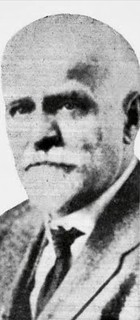 Dr. George Hetrich (1862-1928), was born on June 7, 1862 at Bernville, Berks County, Pennsylvania, son of Jonas Hetrich (1821-1907), a contractor/builder, and Mary Anlenbach Hetrich. His
great-grandfather was an immigrant from Germany and was one of the first settlers in Berks County, Pennsylvania. Hetrich grew up as a youth in the village of Bernville attending the local school.
Next he studied at the Oley Academy and taught for two years. Inspired by his boyhood physician Dr. W. G. Bayerle, he studied under him learning the medicine profession. He graduated Jefferson
Medical College in 1885. Later he studied dermatology under Dr. Shoemaker of the Philadelphia Skin Hospital. He became a member of the Berks County Medical Society and was one of the five
incorporators in 1904. After completing his studies he began his medical practice in Monocacy, Berks County, Pennsylvania, staying there until 1891, when he moved to Birdsboro.
Dr. George Hetrich (1862-1928), was born on June 7, 1862 at Bernville, Berks County, Pennsylvania, son of Jonas Hetrich (1821-1907), a contractor/builder, and Mary Anlenbach Hetrich. His
great-grandfather was an immigrant from Germany and was one of the first settlers in Berks County, Pennsylvania. Hetrich grew up as a youth in the village of Bernville attending the local school.
Next he studied at the Oley Academy and taught for two years. Inspired by his boyhood physician Dr. W. G. Bayerle, he studied under him learning the medicine profession. He graduated Jefferson
Medical College in 1885. Later he studied dermatology under Dr. Shoemaker of the Philadelphia Skin Hospital. He became a member of the Berks County Medical Society and was one of the five
incorporators in 1904. After completing his studies he began his medical practice in Monocacy, Berks County, Pennsylvania, staying there until 1891, when he moved to Birdsboro.
On December 10, 1891, he married Laura Turner (1863-1895), at the German Reformed Church, Douglassville, Pennsylvania. They had three children but only one survived infancy, a son George Roberts Hetrich, Jr. (1893-1949), who fathered George R. Hetrich III, MD (1931-1992), an ANA Member 1982. This third generation of numismatists resulted in The Dr. George P. Hetrich Collection: Bowers and Ruddy Galleries Public Auction Sale January 28-30, 1982.
In 1898, he became a member of the Berks County Historical Society.
He was an antique collector and specialized in china ware. He also was a curio collector and was said to have one of the largest collection in the country. He was a specialist in Civil War Tokens amassing a collection of several thousand specimens. His collection of Civil War tokens was eventually sold by Pennypacker Auction House to a private collector, a young Hungarian-born, Barney V. Sipos (1913-1973) of Indiana, Pennsylvania. Sipos and his wife Mary Ann also obtained Hetrich's notes for his manuscript and loaned them to Melvin Fuld when he was writing with his son George mentioning this in the introduction of Civil War Store Cards (1975) : XVI.
He began purchasing coins directly from the Philadelphia Mint in the last half of the 1890's from 1895 - 1899. Dave Bowers mentioned this when cataloging proof coins in 1982. See The Numismatist, March (1982) : 652.
In 1924, he collaborated with Julius Guttag in publishing their definitive study : Civil War Tokens and Tradesmen's Cards, listing tokens by HG numbers. This became the standard until the Fulds published using Fuld numbers in their series Patriotic Civil War Tokens, originally published serially in The Numismatic Scrapbook Magazine (Chicago, 1959); later revised and updated in a 4th edition issued by the Civil War Token Society (1994). Nevertheless, Hetrich and Guttag in their epic making pioneer opus described 8,345 specimens comprised of 1,194 patriotic tokens and 7,241 store cards.
In 1926, he retired from his medical practice handing it over to his son.
He died of chronic interstitial nephritis on August 10, 1928. He is buried at Saint Michael's Cemetery, Birdsboro, Pennsylvania.
On October 25, 2002, the Civil War Token Society (CWTS) inducted Hetrich into their Hall of Fame.
To read the complete article, see:
HETRICH, DR. GEORGE
(https://sites.google.com/a/numismaticmall.com/www/numismaticmall-com/hetrich-dr-george)
The entire inventory of the Lupia Numismatic Library is for sale. Individual items will be available before the remaining archives are broken up into parcels sold at philatelic auctions in the U. S. and Hong Kong. Check NumismaticMall.com frequently as dozens of new items with estimates will be posted daily until everything is sold.
All inquiries will be given prompt and courteous attention. Write to: john@numismaticmall.com .

DOUGLAS SAVILLE REMEMBERS THEODORE V. BUTTREY JR.
A few thoughts about Ted……... Ted was a good friend of mine. We knew one another for many years - especially during his lengthy time at the Fitzwilliam Museum, Cambridge. In his quest to make the library of the Coin Room at the Fitzwilliam into something that was a truly great and remarkable place, he went to considerable efforts.
A few years ago I purchased a really major British library, including a virtually unique collection of 55 important early sales catalogues. All were held in mid-18th century London. These sales were held by the leading auctioneers of the day: Cock, Baker, Langford, and Gerard, (1742-1788); almost all were neatly hand priced and named. All were bound in half calf, backs gilt and, frankly, unique on the market.
I gave Ted the first offer of buying them……… He responded to my email, by return, to say “Yes, we must have them, please”, but he went on to say, …..”but we are broke………how can you help us, Duggie?” - by that he meant he was broke - since so often in the past he had funded purchases that he knew the Fitzwilliam had to have…… and they almost always were broke…. I had priced them as low as possible in order to make them attractive for Ted…. But. So, I set about working on ideas…. and eventually, after a few weeks, I found a friendly customer who was prepared to pay for them and donate them to the Fitzwilliam…. Ted was delighted - to say the least, and the day I delivered them to Ted in Cambridge will be etched on my mind for a long time – when we unpacked them, he smiled from ear to ear (literally) - and the next day he sent me such a great email in appreciation of the gift.
The donor I had found had recalled a wonderful day he and I had spent in the Fitzwilliam a few years before, when Ted had spent the whole day showing us around the Museum and the great collection of coins that were housed in the Museum…………
Another thing……. Some seven years ago I purchased what was the largest library I had ever handled - some eight tons of books and sales catalogues… yes eight tons…. Packed and shipped to me from the Continent of Europe on 8 or 9 large pallets…… and extremely strong in auction sales catalogues from all over the world… 10,000 or more…….…. A massive exercise….. and, I told Ted about it….. his first and immediate reaction was – “when can I see the catalogues?”…….. Ted loved catalogues. Anything the FW did not have, he not only needed, Ted had to have………It was an unwritten rule.
By, sort of, chance I had the library shipped to a warehouse halfway between Cambridge and Reading where my offices were… as I could never have handled the unpacking in my offices….and, when I told him that, he immediately suggested we meet at the warehouse, and “sort through” the boxes……I thought he was crazy…… not an altogether poor assumption…(!) We met up and spent a long day unpacking -and repacking some 180 large boxes of sales catalogues for him to check if they had them or not- if not then they “needed them” (= had to have them)……. The result was about ten boxes of catalogues they “had to have”.
Ted was a remarkable person and someone with the energy of a man possessed - with a huge vision for the future. Ted will not be forgotten by anyone who ever had any dealings with him.
To read the earlier E-Sylum articles, see:
THEODORE V. BUTTREY (1929-2018) (http://www.coinbooks.org/v21/esylum_v21n02a05.html)
IN MEMORIAM: THEODORE V. BUTTREY, JR. (http://www.coinbooks.org/v21/esylum_v21n04a14.html)
DR. JONATHAN JARRETT REMEMBERS TED BUTTREY
I’m not sure Ted was ever off a stage, if he was where people could see him; he actually did act, indeed one of the first conversations we had where I realised what an strong character he was was when he came into the Department of Coins and Medals announcing that he had been selected as one of the extras for Elizabeth: The Golden Age, which was then filming in Ely. He had thought it best to lie about his age so as not to risk crossing their insurance thresholds, and accordingly, apparently, his legs can be seen in one scene and his top half in another, amid a crowd of bearded Spanish grandees tutting in the background of Philip II’s court.
I don’t know how many septuaganarians would do that; by the time I left the Department, however, I knew that Ted was one of them. He also quoted Shakespeare rather a lot, with great and stagey disappointment in the younger generation if it wasn’t recognised, but was as likely to throw out bits of Sophocles, on whom he wrote what is as far as I know his last book;
He will also probably still have shipments of numismatic sale catalogues, of which he had amassed the world’s largest collection at the Fitzwilliam, inbound, which is going to be a tough day for the crew who remain there when they arrive, emotionally as well as physically. I remember celebrating the 35,000th catalogue’s accession and the Department’s new mobile shelving with an afternoon of tea, cake, Latin acclamations and sung rounds, accompanied by one of my colleagues on “the Giant Wurlitzer”, a very small Casio keyboard that she discreetly played behind a bookshelf so as not to dispel the illusion.
Ted had, of course, written all the words himself, including apologies from the Archbishop of Canterbury, the Queen and the Chancellor of the University none of whom, sadly, were able to be present, and I hope I still have the Order of Ceremonies somewhere. Again, who else would do such a thing, and do it over mobile shelving and auction catalogues?
What else should be said of Ted? There are many stories to tell, most of which maybe don’t belong here like when I made his life dramatically easier at a stroke by showing him the double-click; Ted had determinedly learnt computers as an early adopter and then carried on using that computer in retirement from 1991 to about 2003, with no-one to tell him about some of the major changes his post-2003 machine embodied. But one cannot speak of Ted as a whole without also including his role as a fraud-busting detective. Not only did he catch two coin thieves at the Department during his tenure as Keeper, one of whom he quite deliberately set up with an opportunity he couldn’t miss, but, much more famously, exposed a traffic in early Mexican and American gold bars which he held to be fakes, including pointing a finger at the traffickers;
To read the complete article, see:
In memoriam Ted Buttrey (1929-2018)
(https://tenthmedieval.wordpress.com/2018/01/21/in-memoriam-ted-buttrey-1929-2017/)
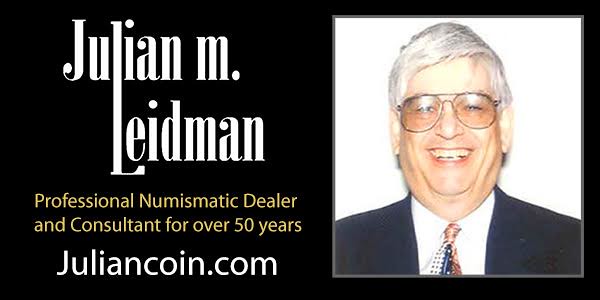
MICHAEL MAROTTA ON JOHN J. FORD
In response to John Kleeberg’s comments on the passing of Theodore V. “Ted” Buttrey and their conflict with John J. Ford over the fake Western Assay Bars, allow me to add some sidebar content. First, it is just as common to honor the dead as it is to scorn the fallen who cannot defend themselves. I point out that John J. Ford was one of the founders of the Numismatic Bibliomania Society.
John Kleeberg wrote: “Clyde Hubbard tried to get Margo Russell to publish Ted's paper [condemning the fake Mexican shipwreck gold bars] in Coin World, but Ford threatened litigation. As Tom Delorey said to me, ‘Margo Russell was impossible to buffalo - but Ford buffaloed Margo.’ “(E-Sylum Volume 21, Number 04, January 28, 2018.)
I had a similar experience when I worked at Coin World in 2000 at the time of the so-called “Great Debate” between Michael Hodder on behalf of Ford and Buttrey on behalf of Eric P. Newman. Beth Deisher permitted no criticism of John J. Ford, not just in print, but verbally in the office. She only spoke well and highly of him. Whether he really had her charmed or not is an open question. When I came on board in April 1999, Coin World had just gotten through a lawsuit by some dealer who claimed that they were out to get him; and he had all of the notebooks of the reporters seized as evidence. That really put a damper on discussions about people and personalities. So, maybe Beth Deisher was not so much buffaloed by John J. Ford as Amos Press was averse to risk.
But Stuart Segan and I would go out in the back lot behind a storage shed and smoke cigarettes. Segan was the Trends (pricing) editor. Like me, he did not have a college degree in journalism. His bachelor’s was in physics from U. Cal. Berkeley, home of berkelium, californium, and americium. He handed me the Clifford Sale Catalog and told me to approach the problem like a scientist. Given this empirical evidence, what theory could you construct? We argued it out for weeks before and after the Great Debate. Segan eventually wore me down: no theory could be constructed because the evidence showed no pattern. “In other words,” he said, “none is genuine.” He had other arguments but we kept it all to ourselves.
Although I was the International editor, managing editor William T. Gibbs assigned me challenging feature articles in American numismatics to widen my knowledge base. One of those was on the 1876 Centennial “celebration” issues, the copies, restrikes, and re-creations of colonial and early Federal coins. Montroville Dickeson was perhaps the leading numismatist of the time most enthusiastically issuing such “celebrations.”
I was told to call John J. Ford and to interview him as an expert. It has been a long time now, but as best I recall, he said that no one should be fooled by the issues of 1876, as they look completely different from the originals. “Not to me,” I demurred. Ford replied (and I do remember this well): “If you cannot tell the difference between 19th century die work and 18th century die work, you have no business at that desk.” A few weeks later, I left Coin World and returned to writing technical documentation for Verizon, Honda, and others.
Just to note: I did not leave only because of Ford, but he and his status symbolized much that is wrong. We speak of people in denial ignoring “the elephant in the room.” American numismatics is a house with many such rooms. Trying to understand Western Assay Bars and 19th century die work, I read every book in the Coin World library on California fractional gold dollars. I finally bought one coin that I regarded as genuine.
Segan asked me, “Who owns the dies now?”
To read the earlier E-Sylum article, see:
KLEEBERG ON TED BUTTREY VS. JOHN FORD (http://www.coinbooks.org/v21/esylum_v21n04a15.html)
QUERY: BUICK, GENERAL MOTORS ENCASED DOLLARS
I have a research request for the readers of The E-Sylum. I recently acquired an encased dollar that is an advertisement piece for Buick. I am thinking about writing an article about these pieces So far, I have identified three types.

Type I has the obverse legend "YOU CAN BET YOUR BOTTOM DOLLAR ON 1940 'RED' CURTICE", and the reverse legend "WHEN BETTER AUTOMOBILES ARE BUILT BUICK WILL BUILD THEM". (Incidentally, Harlow Herbert "Red" Curtice led General Motors from 1953 to 1958. He joined General Motors at age 20, and rose through its AC Spark Plug division to head it by age 36, and made the division profitable during the Depression. Selected to head the Buick division of GM, he expanded its line and made it profitable in the 1930s.)
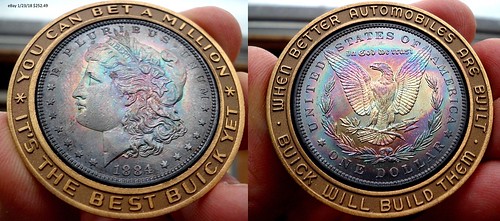
Type II has the obverse legend "YOU CAN BET A MILLION IT'S THE BEST BUICK YET", and the reverse legend "WHEN BETTER AUTOMOBILES ARE BUILT BUICK WILL BUILD THEM".
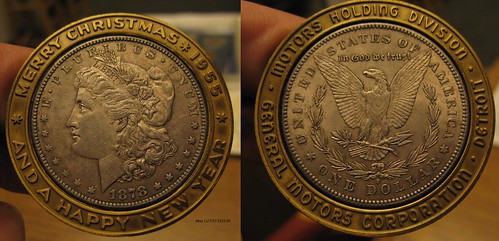
The third type is not specifically Buick, but it is General Motors. It has the obverse legend "MERRY CHRISTMAS 1955 AND A HAPPY NEW YEAR" and the reverse legend "MOTORS HOLDING DIVISION GENERAL MOTORS CORPORATION DETROIT".
I am interested in hearing about other examples of these types and any other types that may exist. I believe that at least the first type were distributed at the 1939-40 New York World's Fair. The second type may have been distributed in 1955-56, as I have an example with a card that references the 1956 model year. Obviously, the third type was distributed around Christmas, 1955. Any information about these pieces would be greatly appreciated.
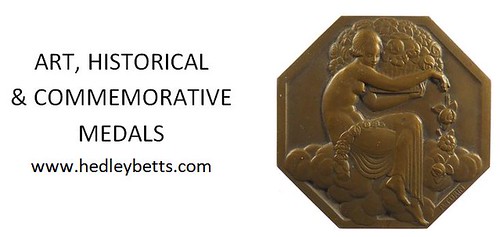
VIDEO: DR. STEPHEN SCHER ON MEDALS
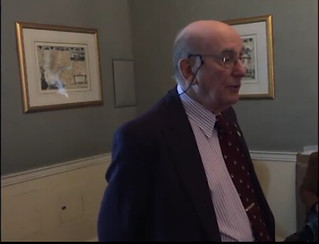 Dr. Stephen Scher was the keynote speaker for the medal Collectors of America (MCA) meeting at the New York International show last year (January 2017). MCA President Skyler Liechty created
a video of the presentation and published it on YouTube. His title was "Hunting the Wild Aftercast". Some great medals are discussed here. -Editor
Dr. Stephen Scher was the keynote speaker for the medal Collectors of America (MCA) meeting at the New York International show last year (January 2017). MCA President Skyler Liechty created
a video of the presentation and published it on YouTube. His title was "Hunting the Wild Aftercast". Some great medals are discussed here. -Editor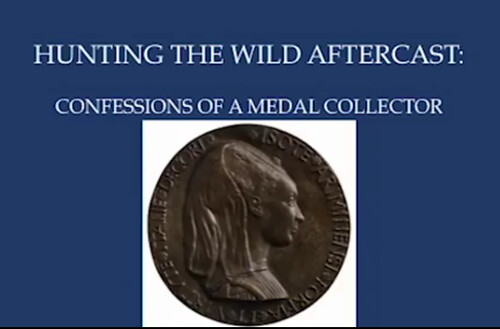
To watch the complete video, see:
Dr. Stephen Scher - Hunting the Wild Aftercast (https://youtu.be/iaCTlazooLY)
For more information about the Medl collectors of America, see:
https://www.medalcollectors.org/
2018 ANA SUMMER SEMINAR
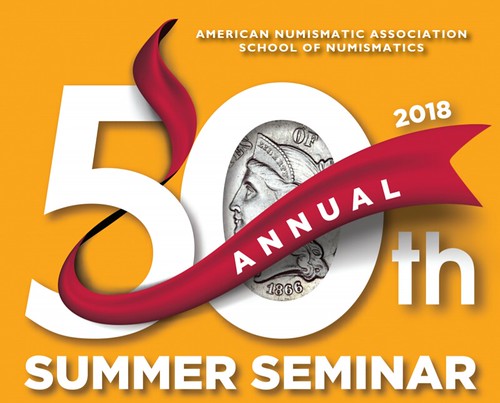
Summer Seminar, held annually at Colorado College, is a once-a-year opportunity for numismatic learning and camaraderie that offers students a varied selection of weeklong courses designed for discovery or continued study. For many students, Summer Seminar is a life-changing event; it has catapulted the careers of several of the nation’s most respected collectors, authors and dealers.
For over 40 years, Summer Seminar has featured classes to suit virtually every collector’s hobby needs. Here are just some of the topics offered each year: Grading United States Coins, Detecting Counterfeit and Altered Coins, Coin Photography, ancient Greek and Roman coinage, Early American Copper Coinage, Colonial Americana, Morgan Dollars, World Numismatics, and much more. Most importantly, everyone attending Summer Seminar shares a common trait: a passion for numismatics.
Your classes are true seminars: students gathered in small groups with everyone an active participant. You’ll learn from instructors who are recognized leaders in their fields, and from the collective experiences of fellow students, who range in age from teenagers to seniors.
Optional tours, seminars and lectures, special events, great food, receptions and banquets, and daily opportunities to visit the ANA’s Edward C. Rochette Money Museum and Dwight N. Manley Numismatic Library round out a perfect week of numismatic immersion.
Rarely do students or instructors attend just one Summer Seminar. More than 70 percent of them come back time and time again for the education, friendships and camaraderie. There are reasons our students and instructors are so loyal and enthusiastic about Summer Seminar. Try it and see.
To review the 2018 course catalog, see: https://www.money.org/uploads//2018-summer-seminar-catalog-opt.pdf
For more information, or to register, see: https://www.money.org/summer-seminar
Scholarships
For more information on ANA Summer Seminar Scholarships, see: https://www.money.org/ANA-Summer-Seminar-Scholarships
PNG 2018 YN Scholarship
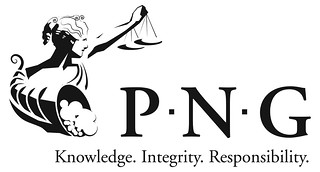 The Professional Numismatists Guild (www.PNGdealers.org) will provide a scholarship to a deserving young numismatist (YN) to attend one of the six-day sessions of the 2018 American
Numismatic Association (www.money.org) Summer Seminar in Colorado Springs, Colorado.
The Professional Numismatists Guild (www.PNGdealers.org) will provide a scholarship to a deserving young numismatist (YN) to attend one of the six-day sessions of the 2018 American
Numismatic Association (www.money.org) Summer Seminar in Colorado Springs, Colorado.
“This is the 14th consecutive year of PNG YN scholarships for the popular, annual ANA educational programs. The PNG scholarship will cover airfare, tuition for one of the two week-long Summer Seminar sessions, meals and five nights of dormitory accommodations on the campus of Colorado College, site of the ANA headquarters,” said PNG Executive Director Robert Brueggeman.
“All young numismatists between the ages of 13 and 22 are eligible to enter and are cordially invited to apply for the scholarship. Entrants must submit a short essay outlining why they should be chosen as this year’s scholarship recipient. The deadline for receipt of the entries is Friday, March 30, 2018,” explained Brueggeman.
Entries must include the applicant’s name and contact information. The essays can be sent by email to info@PNGdealers.org or by mail to the PNG Executive Director, 28441 Rancho California Road, Suite 106, Temecula, CA 92590.
The two separate 50th Annual ANA Summer Seminar six-day sessions will be held Saturday, June 16, to Thursday, June 21, and from Saturday, June 23, to Thursday, June 28, 2018.
Military Numismatics Seminar Scholarship
The 17th Military Numismatics class will be conducted this summer. The class will be taught again by Joe Boling and Fred Schwan. The class will cover a wide array of the military numismatic material of World War II, MPC and other items of interest to Gramsters and collectors in general. The greater community sponsors scholarships to the class.
Now is the time to apply for a scholarship!
To apply for a scholarship please submit the following information to Military Numismatists Scholarship, c/o Dan or Kathy Freeland, PO Box 195, Mayville, MI 48744, U.S.A. or ksfdaf@sbcglobal.net
Name
Address
Phone Number
E-mail address
Numismatic clubs in which you participate (include leadership positions held)
Significant numismatic exhibits (and awards)
Significant numismatic publications (and awards)
Explain your interest in military numismatics.
What do you hope to gain from attending this seminar?
Describe contributions you can make to the success of the class.
Please have applications in the hands of the Freelands by March 10th, 2018. For applicants outside the US requiring invitations for visas, please coordinate your needs with the scholarship chairman early.
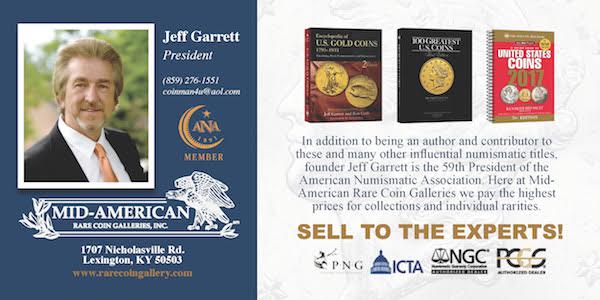
2018 ANS SEMINARS
2018 ANS Summer Seminar
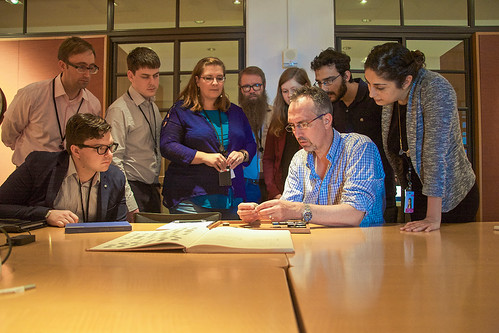
With a deadline of February 23, 2018, The ANS is now accepting applications for the 64th Annual Eric P. Newman Graduate Summer Seminar in Numismatics to be held at the ANS in New York City from June 4 through July 27, 2018.
For over half a century, the American Numismatic Society, a scholarly organization and museum of coins, money, and economic history, has offered select graduate students and junior faculty the opportunity to work hands-on with its preeminent numismatic collections. With over three-quarters of a million objects, the collection is particularly strong in Greek, Roman, Islamic, Far Eastern, and US and Colonial coinages, as well as Medallic Art. Located in New York City’s SoHo district, the Society also houses the world’s most complete numismatic library.
The rigorous eight-week course, taught by ANS staff, guest lecturers, and a Visiting Scholar, introduces students to the methods, theories, and history of the discipline. In addition to the lecture program, students will select a numismatic research topic and, utilizing ANS resources, complete a paper or digital project while in residence. The Seminar is intended to provide students of History, Art History, Textual Studies, Archeology, and Data Science who have little or no numismatic background with a working knowledge of a body of evidence that is often overlooked and poorly understood.
http://numismatics.org/2018seminar/
Columbia University at the ANS
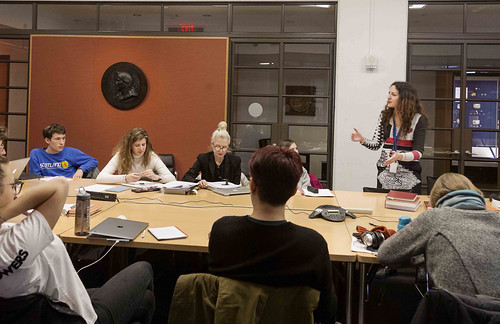
As part of its educational programs, the American Numismatic Society is holding a seminar for students of Columbia University. Dr Lucia Carbone, Edlow Family Assistant Curator of Roman Coins, is teaching a 14-week course, where students will learn the basics of Roman Republican coinage, handle specimens from the Society’s collection and write a research paper.
For more information about the American Numismatic Society, see:
http://numismatics.org/
NEW IMAGES OF ISIS COINAGE

5, 2 and 1 dirham coins dated 1437 (Oct 2015-Oct 2016)
These were recovered from an Islamic State position and documented by a Conflict Armament Research field investigation team in al-Qaim, Iraq, 23 January 2018.
We conduct investigations into the supplies of weapons and associated materiel to terrorist groups worldwide. To do so we deploy on the ground in war zones. This week we recovered a range of weapons and ammunition from Islamic State (IS or Daesh) forces’ positions on the Iraq-Syria border.
Among the weapons, we recovered numerous examples of the attached IS-minted coinage. I limited knowledge of numismatics, but have since consulted several sites which purport to show the forms of IS currency minted since 2015. These do not accord with our finds and I am inclined to think that few people have viewed this coinage in the metal.
For this reason, I wanted to share the attached images with you, which I took this morning, for the following reasons:
1. I assume that counterfeits of IS coinage already exist and are being traded;
2. Current sources on the internet appear to diverge on the form of the coinage and do not accord with what we have found.
3. We recovered the items during military operations against confirmed IS positions and can confirm that the coins were definitively in service with IS forces at the time of recovery.
I hope that this information will help members of the society in clarifying facts in the years to come. To this effect, please find attached images of the following:
1 dirham coin dated 1437 (Oct 2015-Oct 2016)
2 dirham coin dated 1437 (Oct 2015-Oct 2016)
5 dirham coin dated 1437 (Oct 2015-Oct 2016)


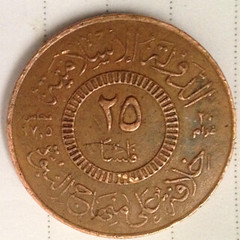

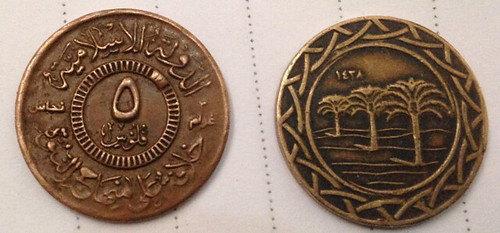

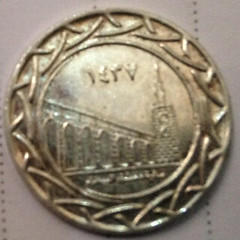
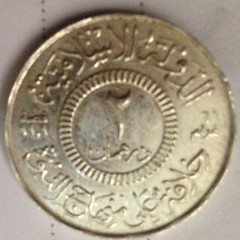

James Bevan adds:
I think the ones provided by the guy working with the YPG are legitimate. YPG are currently in Deir ez-Zor, which I can confirm. Copper I have not seen, but the design is consistent. His silver ones are identical to ours, and the weights of silver written on the coins are correct.

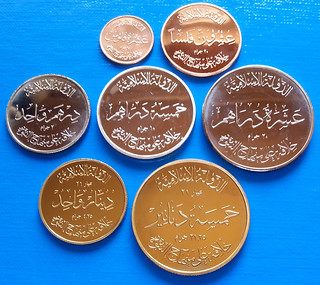
For more information on the Conflict Armament Research organization, see:
http://www.conflictarm.com/
To read the earlier E-Sylum articles, see:
QUERY: WERE THESE COINS MADE BY ISIS? (http://www.coinbooks.org/v21/esylum_v21n01a32.html)
ANSWER: WERE THESE COINS MADE BY ISIS? (http://www.coinbooks.org/v21/esylum_v21n02a11.html)
ISLAMIC STATE COINS ON EBAY (http://www.coinbooks.org/esylum_v19n34a40.html)
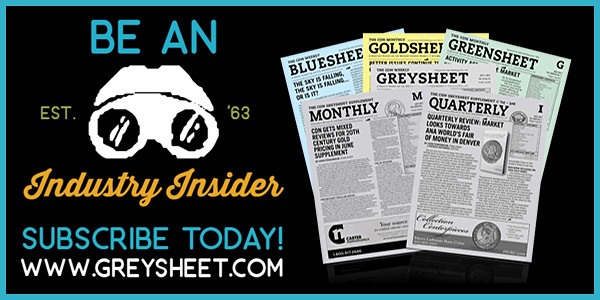
LIVEAUCTIONEERS ADDS BLOCKCHAIN PROVENANCE

LiveAuctioneers, the world’s leading online marketplace for auctions of collectibles, antiques and fine art, today announced its participation in the Codex Consortium, which supports the Codex Protocol, a decentralized title registry for the $2 trillion arts & collectibles (A&C) asset class that brings provenance onto the blockchain. LiveAuctioneers has committed to adopting Codex Protocol, its native token, and its first product, Biddable, the day the protocol is launched. In the short term, Biddable will make bidding easier for LiveAuctioneers’ audience of 12 million users, enable bidding with cryptocurrency, and bring an influx of cryptowealth to auction houses. Over the long term, Codex will create a larger and more trusted art and collectibles market that will benefit LiveAuctioneers’ auction-house partners.
As part of the Codex Consortium, LiveAuctioneers will be working closely with the Codex team and integrating the protocol into its online marketplace. Codex’s first application, Biddable, will make it possible to register for auctions instantly by leaving a cryptocurrency deposit and to pay for won items in cryptocurrency. Today, auction houses lose substantial revenue to bidders who renege on items they win. Because of this, many auction houses require extensive financial disclosures from potential bidders just to participate. With Biddable, anyone can bid easily without invasive financial disclosures.
“We are thrilled to be one of the first members of the Codex Consortium and to bring Biddable to our users. At LiveAuctioneers we pride ourselves in being the first to help auction-house partners grow sales with innovative technology solutions,” said Phil Michaelson, president of LiveAuctioneers. “While we have been recognized in the industry for our customer service, there are major frictions in the bidding experience. Registering for auctions can be hard, especially for foreign bidders and those with anonymous wealth.
Payments in cryptocurrencies are problematic because they lack some of the key criteria for media of exchange. As we've seen in recent weeks, they are a qustionable store of value when prices can soar or fall by huge measures in short time periods.
I expect we'll see adoption of blockchain for provenance first in the ancient coin market, due to the laws surrounding cultural property - dealers and collectors alike want solid provenances to bolster their case that their coins have not been illegally looted or smuggled.
Thoughts and comments are appreciated. Is this a glimpse of the future, or just another diversion? -Editor
To read the complete article, see:
LiveAuctioneers joins Codex Consortium;
blockchain protocol set to revolutionize auction marketplace
(http://artdaily.com/news/102160/LiveAuctioneers-joins-Codex-Consortium--blockchain-protocol-set-to-revolutionize-auction-marketplace#.WncYiYjwaAt)
THE BOOK BAZARRE
1795 CAPPED BUST RIGHT EAGLE
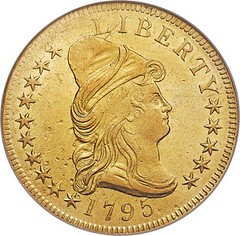
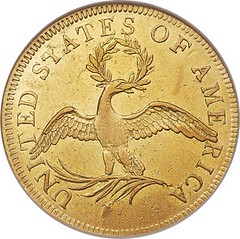
The Philadelphia Mint struck gold coins for the first time in 1795, when a reported mintage of 5,583 Capped Bust Right eagles was accomplished. It is likely that the 1795-dated dies continued to be used in the early part of 1796, however, so the surviving population for the date is somewhat larger than the modest production total would suggest.
Five die varieties are known for the date, and in our upcoming Long Beach Signature Auction, we are pleased to offer an example of the famous BD-3 variety, with nine leaves in the palm frond on the reverse . The "Nine Leaves" variety is the rarest and most famous of all the Small Eagle ten dollar varieties, with a surviving population of 18-22 examples, according to PCGS CoinFacts. John Dannreuther believes the BD-3 accounted for 210-500 examples of the original mintage for the date. The obverse die was used previously to strike the BD-2 variety of this date, and used again to produce the final BD-5 variety. The reverse die shows several defects on all known specimens, including a die break at the tip of the second leaf, a crack from the edge through the top of the first T in STATES, and another faint crack at the lower right of the first A in AMERICA. These defects may have been caused by die buckling during the preparation of the dies, before the coins were struck. It seems likely that the reverse failed quickly, accounting for the rarity of the BD-3 today.
Although the "Nine Leaves" reverse is a celebrated issue today, it was unknown to early students of the series. John Colvin Randall identified four varieties of 1795-dated eagles by 1885, but he did not mention the "Nine Leaves" reverse in the catalog of his collection when it was sold by W. Elliot Woodward in June of 1885. Likewise, Silas Wodell exhibited three varieties of the 1795 eagle at the 1914 ANS Exhibition, but the BD-3 variety was not represented. The first numismatist to publish a description of the variety was Edgar Adams, in his article in the May 1934 edition of The Coin Collector's Journal: The BD-3 received little publicity before about 1980, and it was seldom attributed in its infrequent auction appearances before the turn of the millenium.
To read the complete article, see:
Seldom Seen Selections: Rare 9 Leaves, BD-3 1795 Capped
Bust Right Eagle (https://coins.ha.com/heritage-auctions-newsletter/coin-news-incredible-collections-headline-february-long-beach-offerings.s?id=5439)
1879 QUINTUPLE STELLA OFFERED


Stack’s Bowers Galleries is thrilled to present the incredible 1879 Quintuple Stella from the Garrett Collection in their Official Auction of the Whitman Coins & Collectibles Baltimore Expo this March. The 1879 Quintuple Stella is among the most legendary issues of United States numismatics, recognized for both its beauty and incredible rarity. It is the larger sibling to the more prolific Four-Dollar Stellas struck in 1879 and 1880, and shares with them a similar obverse legend outlining their proposed compositions in metric units. These issues were products of a global push to establish an international currency and stabilize the price of silver, which had been falling since the California Gold Rush, which began in the late 1840s. Though the Mint issued several significant patterns in the 1870s and 1880s, none were ultimately approved for circulation and the idea of an international currency was abandoned by the United States.
The Quintuple Stella is much rarer than the Four-Dollar Stella. Just five examples survive of this large $20 pattern, one of which is forever impounded in the Smithsonian Institution. The most recent example to sell was the Brand- Carter-Simpson specimen that realized nearly $1.9 million in a May 2016 auction.
The piece to be offered by Stack’s Bowers Galleries can be traced directly back to its origins at the U.S. Mint, and has since passed through the hands of several significant numismatists, including J.W. Haseltine, Dr. Edward Maris, and, of course, the Garrett family. Stack’s Bowers Galleries first handled this incredible treasure nearly 40 years ago as part of Bowers and Ruddy’s sale of the magnificent Garrett Collection, sold on behalf of the Johns Hopkins University. It is now certified Proof-63 Cameo by PCGS and is certainly one of the most beautiful survivors of this rare gold pattern.

MEDAL SELECTIONS FROM NUMISMAGRAM: SKULLS
Medal for Anthropologist Blumenbach
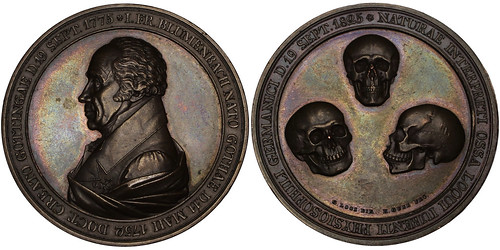
GERMANY. Johann Friedrich Blumenbach bronze Medal. Issued 1825. Commemorating the Jubilee of the Anthropologist’s Doctorate (50mm, 68.58 g, 12h). By G. Loos and H. Gube. I FR BLUMENBACH NATO GOTHAE D 11 MAII 1752 DOCT CREATO GOTTINGAE D 19 SEPT 1775, bust left / NATURAE INTERPRETI OSSA LOQUI IUBENTI PHYSIOSOPHILI GERMANICI D 19 SEPT 1825, three human skulls, as classified by Blumenbach: Caucasian, Ethiopian, and Mongolian. Edge: Plain. Medicina in Nummis 398; Brettauer 125. Choice About Uncirculated. Rich glossy red-brown surfaces, with some underlying luster and only a few light marks. An interesting and haunting type.
Blumenbach was an anthropologist from the University of Göttingen and specialized in the study and classification of human skulls from around the world—later known as craniometry. At the time of his death, he owned 245 whole skulls and fragments, along with two mummies. The term ‘caucasian’ as a descriptor of race was also derived from him, as his influential use of it in 1795 quickly caught on in scientific circles. For more information on Blumenbach and a modern analysis of his career—as well as a reference to this medallic issue—visit Nell Irvin Painter’s “Why White People Are Called ‘Caucasian?’,” which can be found at: glc.yale.edu/sites/default/files/files/events/race/Painter.pdf .
To read the complete item description, see:
100245 | GERMANY. Johann Friedrich Blumenbach bronze Medal.
(https://www.numismagram.com/product-page/100245-germany-johann-friedrich-blumenbach-bronze-medal)
Medal for Anthropologist Vallois
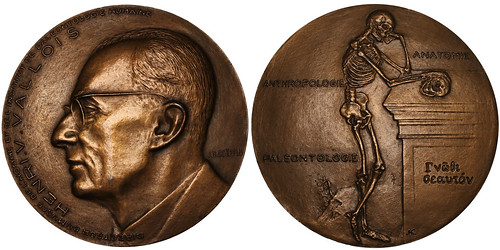
FRANCE. Henri-Victor Vallois bronze Medal. Issued 1961. Commemorating the Achievements of the Anthropologist, Paleontologist, and Anatomist (67mm, 142.98 g, 12h). By J. H. Coëffin. DIRECTEUR DU MUSÉE DE L'HOMME ET DE L'INSTITUT DE PALEONTOLOGIE HUMAINE / HENRI V VALLOIS, bare head left / ANTHROPOLOGIE PALEONTOLOGIE ANATOMIE, skeleton standing right, in attitude of reflection, resting skull upon one hand and the other hand upon another skull set upon base inscribed G???? sea?t?? (know thyself). Edge: BRONZE «cornucopia». As Issued. Rich reddish-bronze surfaces, with a pleasing brilliance. A very rare and supremely interesting piece.
Another highly acclaimed anthropologist, among other things, Vallois expanded upon Blumenbach’s classifications, arriving at 27 races in his 1944 work “Les races humaines.” This large module piece features a scarce representation of a skeleton—not as a symbol of death—but more as an aspect of contemplation. This idea is further reinforced by the Greek inscription upon the base, urging the viewer to look within and understand his or her own self before anything else. A powerful thought!
To read the complete item description, see:
100223 | FRANCE. Henri-Victor Vallois bronze Medal.
(http://numismagram.com/product-page/100223-france-henri-victor-vallois-bronze-medal)
ANCIENT COIN AMONG OLDEST FOUND NEAR JERUSALEM
 Israeli authorities inaugurated a nature park on Wednesday near Jerusalem after five years of archaeological excavations at Ein Hanya, the second-largest spring in the Judean Hills and a
key site in the history of Christianity. Along with an announcement that the park will open to the public free of charge within months, the Israel Antiquities Authority revealed some major findings
at the site, including a column capital typical of royal structures from the First Temple era and one of the oldest coins ever discovered in the Jerusalem area.
Israeli authorities inaugurated a nature park on Wednesday near Jerusalem after five years of archaeological excavations at Ein Hanya, the second-largest spring in the Judean Hills and a
key site in the history of Christianity. Along with an announcement that the park will open to the public free of charge within months, the Israel Antiquities Authority revealed some major findings
at the site, including a column capital typical of royal structures from the First Temple era and one of the oldest coins ever discovered in the Jerusalem area.
The new findings were publicized for the first time as senior officials participated in a tree-planting ceremony for the Jewish festival of Tu Bishvat and revealed the new nature park.
The statement said that many of the finds were dated to the time of the First Temple, about 2,400 to 2,800 years ago.
“After the destruction of the First Temple, settlement was renewed at the site in the form of an estate house that was inhabited by Jews,” the IAA said.
It said that another significant find from that period was a rare silver coin, described as one of the most ancient discovered so far in the Jerusalem area. It is the ancient Greek currency drachma, with the coin “minted in Ashdod by Greek rulers between 420 and 390 BCE.”
More coins, pottery, glass, roof tiles and multicolored tesserae, or pieces of mosaic, from the Byzantine period were unearthed in the excavation, leading the archaeologists to say that it was during that period (4th–6th centuries CE) that the site reached its zenith.
To read the complete article, see:
First Temple-era relics of possible royal estate found in Jerusalem hills
(https://www.timesofisrael.com/first-temple-era-relics-of-possible-royal-estate-found-in-jerusalem-hills/)

1967 LEEDS ROMAN COIN HOARD ON DISPLAY

A remarkable Roman stash made up of hundreds of ancient coins has gone on display in Leeds this week.
Part of the famous Cridling Stubbs hoard, which lay buried in a North Yorkshire field for more than 1,600 years, can now be seen in Leeds City Museum’s Ancient Worlds gallery until July.
Experts believe the unique stockpile of more than 3,300 copper coins may have been hidden by the owner inside a large jar in around AD 346 to keep it safe from Saxon and Irish raiders.
“We may never know for sure why they were buried, but the hoard is a truly remarkable and historically significant find which can teach us a lot about life, coins and currency during a turbulent chapter in the story of Roman Britain.”
The vessel containing the hoard was restored from several pieces and may have already been broken when it was filled with coins, suggesting that it was buried quickly in a time of crisis.
Most of the hoard is made up of coins dated between AD 300-346. These include special issues in honour of Rome and Constantinople (now Istanbul), and for Constantine the Great and the Caesars, emperors of Rome.
The collection also contains coins struck in memory of Helena, Mother of Constantine the Great, and Theodora, his step-mother.
The coins were meticulously recorded in 1967 by Elizabeth Pirie, then curator of archaeology at Leeds Museums and is displayed alongside catalogue pages, photographs and drawings from the museum archive.
To read the complete article, see:
Copper load of this! Ancient coin stash at Leeds City Museum
(https://www.yorkshireeveningpost.co.uk/news/copper-load-of-this-ancient-coin-stash-at-leeds-city-museum-1-8992888)
REAL DETECTORISTS FIND FAKE DETECTORISTS FIND
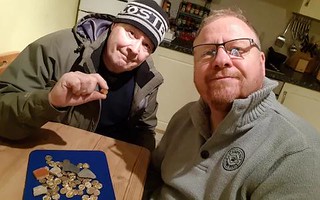 When metal detectorist Paul Adams stumbled on a hoard of gold coins he believed his luck was finally in.
When metal detectorist Paul Adams stumbled on a hoard of gold coins he believed his luck was finally in.
In all the weeks he had spent carefully scanning fields with his metal detector he had never before found such a treasure.
With a little jig of delight and a cry of “Roman gold! Roman gold!” Mr Adams called over his detecting partner Andy Sampson to feast his eyes on the trove, worth what they estimated might be as much as £250,000.
But in what turned out to be a case of life imitating art imitating life, the 54 gold coins were nothing more than props left behind by a film crew making the BBC comedy series Detectorists, starring Mackenzie Crook and Toby Jones as two hapless friends dedicated to the search for buried treasure.
During filming of a scene from the first episode of the last series, the replica coins were shown first being buried in a clay Roman pot before being brought to the surface by a tractor ploughing a field 2,000 years later.
Unfortunately for Mr Adams, 58, and Mr Samson, 54, when it came to clearing the set the production company left behind some of the coins, raising the pair’s hopes when they came across them a few weeks later.
"I think we are officially the world's unluckiest metal detectorists. Our story would make a TV series of its own,” said Mr Sampson.
"After we found them I was paying off my mortgage and buying a sports car in my head. We thought we were looking at the real McCoy. Now I look at them and want to cry."
Mackenzie Crook, 46, who wrote, directed and starred in Detectorists, said he was 'horrified' to learn that the pair thought they had uncovered a Roman hoard.
"As a detectorist myself, I'd like to assure these gentlemen that I was gutted that I might have contributed to their disappointment. I hope they continue searching and I hope they find their real gold soon."
To read the complete article, see:
Detectorists stumble on treasure trove of Roman gold, or so they think
(http://www.telegraph.co.uk/news/2018/01/30/detectorists-stumble-treasure-trove-roman-gold-think/)
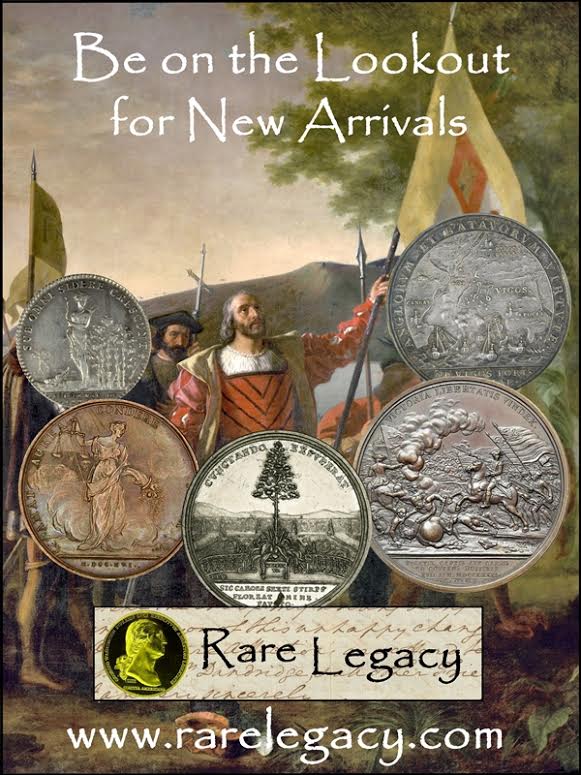
U.S. MINT RESUMES MUTILATED COIN PROGRAM
Each year, millions of American cars, washing machines, vending machines, and other coin-operated devices are torn to bits and recycled, mostly in China and India. This process also results in the recovery of millions of dollars in coins that were hidden in these machines and mutilated during the recycling process.
Until 2015, recyclers could collect these mutilated coins and sell them back to the US Mint at a rate that equals their unmutilated value ($20 per pound for quarters and dimes, $1.81 for a pound of pennies, $4.53 for a pound of nickels). This redemption program provided an important source of income for the scrap-metal recycling industry, which was suddenly cut off in 2015 when the Mint abruptly halted the program. At the time, the Mint said it noticed a significant uptick in the number of coins being processed by its Mutilated Coin Redemption Program that had been sent from abroad, stoking fears that foreign recycling programs were defrauding the US Mint with counterfeit coins.
“Much of the volume in coins was coming from China as a result of the natural global trade of scrap materials,” Billy Johnson, the chief lobbyist for the Institute of Scrap Recycling Industries, told me in an email. “However, for those not as familiar with the workings of the recycling industry this created questions. The U.S. government sought to do their due diligence in making sure the coins recovered were legitimate.”
After a two-year hiatus, the US Mint’s mutilated coin program resumed its activities in late December 2017...
The coins are usually in pretty rough shape after being shredded, which can make telling counterfeits from real coins a difficult process. When I contacted the US Mint, it declined to comment on how it identifies counterfeit mutilated coins.
In 2008, the US Mint noted an increase in the number of mutilated coins being shipped to it from China and other foreign countries and expressed concern that they may be counterfeit. An investigation later that year at a contracted processing facility revealed that none of the coins at the facility appeared to be counterfeit, but doubts at the Mint lingered.
As it turned out, however, the government just didn’t understand how the global scrap recycling industry worked. As part of its lawsuit to recover the $3.2 million it was owed for its seized mutilated coins, Wealthy Max flew two executives from China to the US to explain how the Chinese recycling industry worked and to demonstrate its massive scope (China is the number one importer of US scrap metals). It even went so far as to open up 13 tons of mutilated coins for inspection by the public, but no government officials bothered to attend the event. Neither Wealthy Max, nor its legal representation, could be reached for comment.
The problem with the claim that more half dollars were redeemed than ever produced is that the government had no record of the number of half dollars redeemed through the coin mutilation program, making this allegation impossible to prove. Moreover, the reason why more coins were redeemed in 2007 than could possibly have been shipped in scrapped cars was that many of those coins were from previous scrap that had been stored in China for years before being shipped and were also recovered from other scrap sources (such as washing and vending machines), not just cars.
So barring any evidence that Chinese recyclers were engaged in a massive scam to counterfeit mutilated US coins, the government quietly resumed its coin redemption plan in December. It made a few changes to its mutilated coin redemption process, including a certification process for recyclers depending on how many coins the recycler submits per year.
“The U.S. Mint gets a lot of value from the redemption of damaged coins,” Johnson, said referring to the Mint’s decision to reinstate the program. “It gets precious metals back so they may be used in new coins and protects the integrity of the U.S. coinage system by taking older coins out of circulation. Once the U.S. Mint had a better understanding of the process in which the coins are recovered, it was really a no-brainer.”
To read the complete article, see:
Lost Coins Help Prop Up the Multibillion-Dollar Car Recycling Industry
(motherboard.vice.com/en_us/article/xw4e5j/coin-recycling-damaged-mint-china-fraud)
REPLACING THE RUSTED RUPEES OF SEYCHELLES
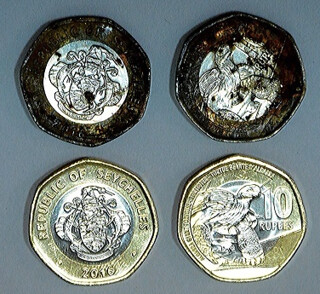 New 10 rupee coins will soon be put into circulation to replace those currently being used, which have a tendency to rust, a top official of the Central Bank of Seychelles said earlier this
week.
New 10 rupee coins will soon be put into circulation to replace those currently being used, which have a tendency to rust, a top official of the Central Bank of Seychelles said earlier this
week.
The head of the banking services in the Central Bank, Mike Tirant, said that 5 million pieces of coins with a new metal composition will be produced and circulated in the first three months of this year.
Made of nickel plated and nickel brass, the new coins are expected to be more resilient to the climate than the previous ones which although were nickel plated had brass plated steel.
The switch is being made after the Royal Mint in the UK reported that the rusted look seen on the 10 rupee coins already in circulation since December 2016 is caused by Seychelles’ climate and exposure to seawater.
Reports of the rusted 10 rupee coins began barely a month after they were put in circulation by the Central Bank of Seychelles to replace the 10 rupee notes. The damaged coins were sent to the UK for analysis.
Simon Lake, Director of Sales of the Royal Mint, said, “It appears that the climate in Seychelles and the way that the people use the coin exposes them to sea water which causes this explosion that looks like rust on the surface of the coin.”
He added that this is the first time that the Royal Mint -- a company that the Seychelles’ Central Bank has been working with since 1982 -- encountered such an issue after 150 years of service.
To read the complete article, see:
Shiny new coins will replace Seychelles’ rusted 10 rupees (http://www.seychellesnewsagency.com/articles/8627/)

2017 ONE POUND COIN OBSOLETE BLANK ERROR

Struck on blank for obsolete and withdrawn type. Obv: profile bust with ELIZABETH II D G REF F D legend and date with panel below. Rev: national symbols with ONE POUND below. 8.54 grams.
Condition
Almost uncirculated; usual bag marks, lustrous. Extremely rare and dramatic; possibly unique.
Provenance
Discovered in circulation, 2017.
Literature
S. J39 for type.
Footnotes
This one pound coin of the new type (issued 2017) has been struck on a blank for the previous, obsolete and withdrawn one pound coin rather than on the new bi-metallic flan that should have been
used; such occurrences are extremely rare.
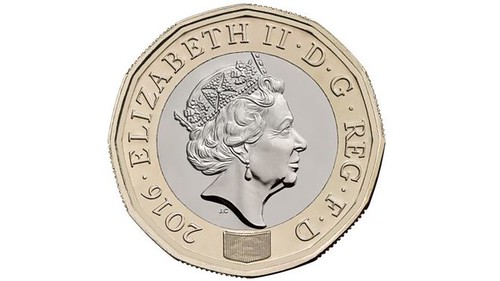
To read the complete lot description, see:
English Milled Coins - Elizabeth II - 2017 - Obsolete Blank Error £1
(https://timelineauctions.com/lot/elizabeth-ii-2017-obsolete-blank-error-1/104404/)
COIN COMMEMORATES QUEEN ELIZABETH II CORONATION
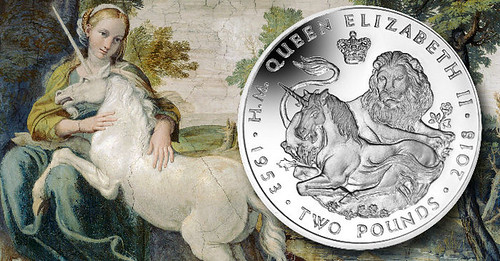
The government and treasury of the British Indian Ocean Territory have issued (25th January) a new crown coin and gold coin which were minted in celebration of one of most solemn events that took place in the United Kingdom 65 years ago: The Queen’s coronation.
It was nearly 66 years ago that the then-Princess Elizabeth acceded to the throne at the age of 25 upon the death of her father, King George VI. The succession occurred on the 6th February 1952, while the Princess, along with her husband Prince Philip were en-route to Australia in place of her ailing father. She was in Kenya on a scheduled stop-over when she was told of the sad news that her beloved father had died and, as such, she was now Queen of Great Britain. The new Queen flew back to London and upon touching down on British soil, she was proclaimed Queen by her various privy and executive councils.
The coronation took place more than a year later due to the tradition that holding such a festival is inappropriate during the period of official court mourning following the death of a monarch. The celebration and solemn ceremony was the first major royal event to be broadcast on television (against Winston Churchill’s advice). It was broadcast in both black and white and colour, and was viewed by 27 million of the then-36 million Britons.
The lion and the unicorn signify the United Kingdom and appear as its heraldic supporters on its coat of arms. The lion represents England and the unicorn represents Scotland. The combination of the two animals dates back to the accession of James I of England in 1603, who was also James VI of Scotland. Over the last 400 years, these animals have become strongly associated with royalty and, by proxy, Her Majesty Queen Elizabeth II.
To read the complete article, see:
British Indian Ocean Territory: Beautiful lion and
unicorn depicted on coronation anniversary crown coin (http://news.coinupdate.com/british-indian-ocean-territory-beautiful-lion-and-unicorn-depicted-on-coronation-anniversary-crown-coin/)

2018 FOUR GENERATIONS ROYAL FAMILY COIN ISSUED
 The Royal Mint enjoys a very special relationship with the Royal Family, marking the important milestones in their lives for the nation. The year 2018 will be remembered for its many
memorable royal occasions and, as we enjoy these happy events, we celebrate four generations of royalty coming together to share the times with us.
The Royal Mint enjoys a very special relationship with the Royal Family, marking the important milestones in their lives for the nation. The year 2018 will be remembered for its many
memorable royal occasions and, as we enjoy these happy events, we celebrate four generations of royalty coming together to share the times with us.
When His Royal Highness Prince George of Cambridge was christened, the nation was delighted to see four successive generations of the Royal Family united for the special occasion. To mark this moment, Her Majesty The Queen, her son His Royal Highness The Prince of Wales, her grandson His Royal Highness The Duke of Cambridge and her great-grandson Prince George have been honoured together on an official United Kingdom coin for the first time.
The coin is available in a number of editions including precious metal Proof versions and a Brilliant Uncirculated £5 coin.
For more information, or to order, see:
The Four Generations of Royalty 2018
(https://www.royalmint.com/our-coins/events/the-four-generations-of-royalty-2018/)
The design—created by calligrapher and heraldic artist Timothy Noad—features oak branches inspired by the Royal Badge of the House of Windsor and the initials of each generation.
“I started with several ideas, including a set of each of the royals in profile, but decided to go for the approach of overlapping initials to convey a sense of family,” said Noad.
This year is set to be a busy one as the ever-growing Royal Family look forward to a number of Royal celebrations, including the 65th anniversary of the Queen’s coronation, the Prince of Wales’ 70th birthday, Prince George of Cambridge’s fifth birthday and a royal wedding.
To read the complete article, see:
Four generations of Royals appear on official U.K. coin for first time
(https://canadiancoinnews.com/four-generations-royals-appear-official-u-k-coin-first-time/)
HIGHLAND MINT STRIKES 2018 SUPER BOWL COINS
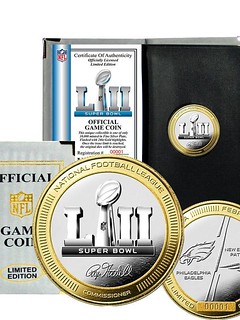 It’s pretty amazing to think that Brevard County has played a role in the last 24 Super Bowls. And it will again on Feb. 4 to make it No. 25.
It’s pretty amazing to think that Brevard County has played a role in the last 24 Super Bowls. And it will again on Feb. 4 to make it No. 25.
A Brevard-made product is there from the very start when the referee flips the coin and asks one of the team captains to call “heads” or “tails” to decide who gets the ball first.
Of course it's the Highland Mint, the Melbourne company that makes the coin used in the opening toss for the Super Bowl. A company line is: “'The game doesn't start without us.”
There's another important role the coin plays. Because we’re a betting society and wager on just about any detail of the Super Bowl, millions of dollars are exchanged in Las Vegas on the outcome of that opening toss.
The flip coin, which is about the size of a silver dollar, ends up in the Pro Football Hall of Fame in Canton, Ohio. The remaining 99 coins of the first 100 coins pressed are given to players and NFL dignitaries. The rest — about 9,900 — are sold to the public.
To read the complete article, see:
Melbourne company Highland Mint continues to flip out
over its role in the Super Bowl (https://www.floridatoday.com/story/news/2018/01/26/melbourne-company-continues-flip-out-over-its-role-upcoming-super-bowl/1066858001/)
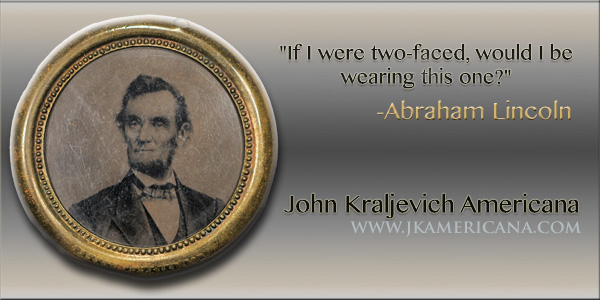
NEW DEVELOPMENT IN D. B. COOPER CASE CLAIMED
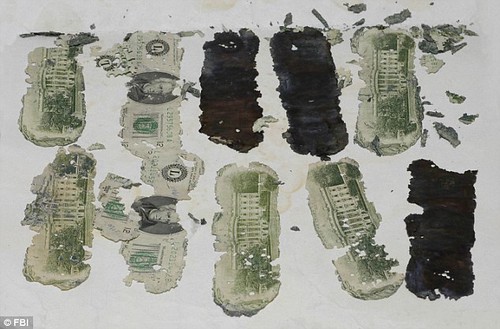
D. B. Cooper ransom notes (FBI Photo)
It's a bombshell development in a 45-year-old cold case mystery. A commercial airplane hijacker escaped with a daring parachute jump in 1971 and was never seen again.
CBS Sacramento reports that a team of private investigators says it has cracked a code that it says shows the infamous hijacker who went by the name D.B. Cooper is, in fact, a man who has ties to the Stockton area...
Since the day before Thanksgiving in 1971, the mysterious case of the Northwest Orient airlines hijacker has intrigued people around the world.
The man who called himself D.B. Cooper showed a flight attendant a bomb in a suitcase, allowed passengers to leave, asked for $200,000 and parachutes, and when the plane took off again, jumped out with all that cash strapped to his body.
To read the complete article, see:
D.B. Cooper mystery: Investigators claim new revelations about infamous
hijacker (https://www.cbsnews.com/news/db-cooper-mystery-investigators-claim-new-revelations-about-infamous-hijacker/)
To read earlier E-Sylum articles, see:
D. B. COOPER MYSTERY CONTINUES (http://www.coinbooks.org/esylum_v18n48a43.html)
D.B. COOPER RANSOM BANKNOTE OFFERED (http://www.coinbooks.org/esylum_v19n35a35.html)
D.B. COOPER EVIDENCE CLAIMED (http://www.coinbooks.org/v20/esylum_v20n03a20.html)
COUNTERFEITERS FORGE AUSTRALIAN POLYMER NOTES
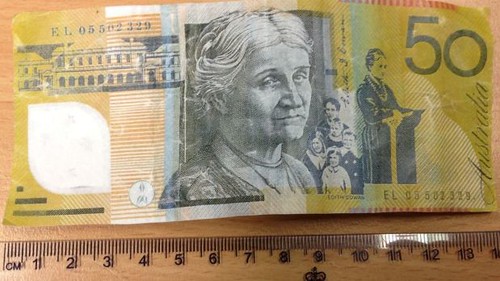
They were once described as unforgeable, but these days Australia's polymer notes are under attack. Counterfeiters are using cheap printing technology to make notes so good they can fool the banks and courts.
This year marks 30 years since the introduction of the first polymer bill. And in those three decades Australia has enjoyed low and falling forgery rates.
But recently the forgers have been clawing back those gains and today Australia is one of only four countries where counterfeiting rates are increasing.
Roland DG's commercial-grade printers are the workhorses of the printing business. By the standards of the industry they are considered affordable and powerful. For about $70,000 you can buy a machine capable of printing virtually any colour on any substrate, including clear film.
Thirty years ago when the first Australian polymer bank note was introduced, the idea they could be faked with off-the-shelf printers and materials was unthinkable.
To read the complete article, see:
'Unforgeable' Australian bank notes under attack from
counterfeiters (http://www.smh.com.au/national/unforgeable-australian-bank-notes-under-attack-from-counterfeiters-20180202-h0sgm8.html)
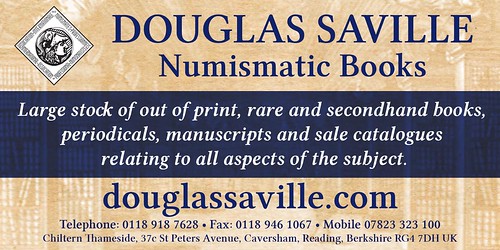
UKRAINIAN ARTISTS CREATE TRUMP PORTRAIT IN PENNIES
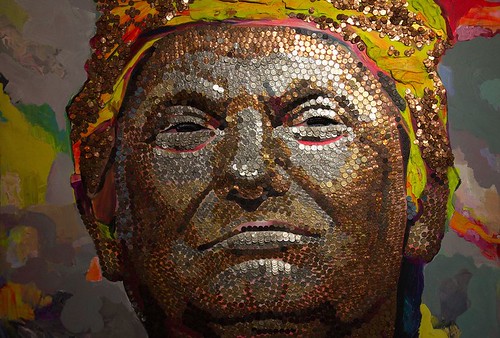
“I’m rich,” Donald Trump assured crowds when he ran successfully for US president in 2016. Two Ukrainian artists have taken him at his word and created a portrait of Trump composed largely of American coins. But the artists say they have yet to find a venue willing to deal with the controversy of displaying it publicly.
The Face of Money (2017) is described by the artists Daria Marchenko and Daniel Green as “rich and cheap”. Measuring more than six feet tall, the work depicts Trump’s coppery face and hair using pocket change—pennies and nickels mostly—and a suit made of poker chips.
The portrait was shown to a select few when it was stored in a closet at the Ukrainian Institute of America, which is hosting the artists’ travelling exhibition Five Elements of War (until 6 February). The show's centrepiece is a portrait of the Russian president, Vladimir Putin made from rifle shells that were collected in the Russian-occupied eastern territories of Ukraine. A shifting spotlight in the gallery evokes different moods in Putin’s face.
“We’re talking about aggression,” Marchenko says. “The light changes. The winds change, but it doesn’t change the substance.” As for Trump, “Money is his personality,” Green says. “For Putin, it is bullets, but for Trump, it is coins.”
While their exhibition at the Ukrainian Institute was extended by two days, Marchenko and Green said they were asked to remove the Trump portrait from the building. It was moved to the Ukrainian Museum on 6th Street between 2nd and 3rd Avenue, but it did not remain there either. Both institutions cited fears of scandal, the artists say.
Face of Money is now being held at an undisclosed location in Manhattan, the artists say, but they plan to exhibit it in Los Angeles and Las Vegas this spring.
To read the complete article, see:
Trump change: Ukrainian artists unveil presidential portrait made of money
(https://www.theartnewspaper.com/news/trump-change-ukrainian-artists-unveil-presidential-portrait-made-of-money)
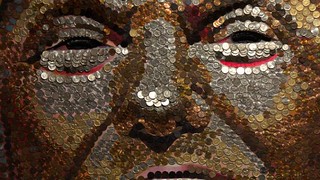

LEFT: Trump portrait closeup; RIGHT: Putin portrait
The portrait of Trump took three months to make -- half the time of the Putin portrait -- as the coins were easier to work with than bullet shells. They used heat to bring out varying degrees of color in the coins, mixed with paint for Trump's famous hair.
They used casino chips for his jacket, a reflection of Trump's past as a casino magnate -- and his penchant for being a risk-taker.
Reaction to the portrait has been mixed. The Ukraine Institute in New York that is currently hosting the "Five Elements of War" exhibition said it is refusing to display the Trump portrait for fear of political reprisal. Other galleries have had a similar response, the duo said. They plan to showcase both portraits of Putin and Trump in an exhibition in Las Vegas in May.

The artists posing with the work
To read the complete article, see:
To coin a frame: A portrait of Trump, made from pennies (cnn.com/2018/02/01/politics/trump-portrait-pennies/index.html)
LINCOLN'S WORLD FAMOUS 50,000 SILVER $ BAR

Lincoln's 50000 Silver Dollar Bar, a bar, restaurant and casino, once had 10,000 silver dollars mounted and on display on the walls and was known as the World Famous 10,000 Silver Dollar Bar. When they hit 50,000 silver dollars the name became the 50,000 Silver Dollar Bar. They no longer have 50,000 silver dollars. The day we visited, the count had risen to 71,047, with silver dollars under the bar, covering the walls, hanging from the ceiling, pretty much everywhere they can fit a few more silver dollars. Naturally, they refuse to repaint their sign each time another is added to the collection, so the name remains "Lincoln's 50,000 Silver Dollar Bar". We suppose that it may well change again when they hit 100,000. The collection is the largest of its kind anywhere. As well, their 5,000 square foot gift shop is the largest in Montana.
In keeping with the surname of the family who started the business in 1952, and whose descendants still operate it, there is even a wood carving of "Old Abe", Abraham Lincoln, in the bar
Lincoln's Silver $ offers a restaurant, two bars, gift shop, motel, two casinos, gas, diesel and a convenience store. This is a family owned and operated facility offering Montana hospitality to all travelers. The largest of its kind, a collection of silver dollars is on display in our unique barroom. People from all over the world have their names inscribed by their inlaid silver dollars in the bar top and walls.
To read the complete article, see:
Lincolns 50000 Silver Dollar Bar - Haugan, MT
(http://www.waymarking.com/waymarks/WMX12C_Lincolns_
50000_Silver_Dollar_Bar_Haugan_MT)


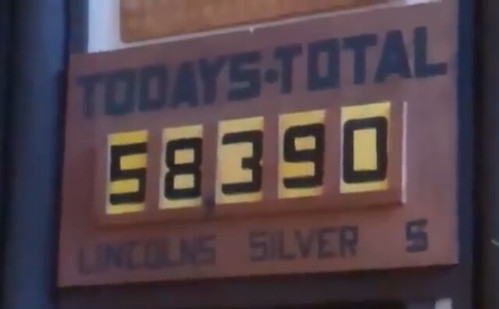
To watch the video, see:
50,000 Silver Dollars - At Lincoln's Silver Dollar Bar Montana (https://www.youtube.com/watch?v=GdGRxSuDy3o)
To visit the 50,000 Silver $ Bar web site, see:
Lincoln's World Famous 50,000 Silver $ Bar (http://www.50000silverdollar.com/portfolio.html)

IN OTHER NEWS: FEBRUARY 4, 2018
Noe Seeks Clemency
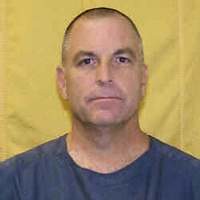 Admitting he betrayed the public trust, Tom Noe is asking Governor John Kasich to commute his 18 year prison sentence.
Admitting he betrayed the public trust, Tom Noe is asking Governor John Kasich to commute his 18 year prison sentence.
Attorneys for the former Maumee coin dealer and political power broker filed the petition with the Ohio parole board .
Noe is serving an 18 year term for stealing millions from investments in rare coin funds by the bureau of workers compensation.
Noe has served over nine years of the 18 year sentence.That sentence followed a conviction and two year federal sentence for illegal contributions to the presidential campaign of George W. Bush.
Governor Kasich denied Noe's last request for clemency in 2015.
To read the complete article, see:
Former coin dealer and GOP power broker Noe seeks clemency
(http://www.13abc.com/content/news/Former-coin-dealer-and-GOP-power-broker-Noe-seeks-clemency-472042783.html)
To read earlier E-Sylum articles, see:
NEW BOOK: COINGATE (http://www.coinbooks.org/v20/esylum_v20n53a02.html)
ON TOM NOE'S COINGATE CULPABILITY (http://www.coinbooks.org/v21/esylum_v21n02a14.html)

